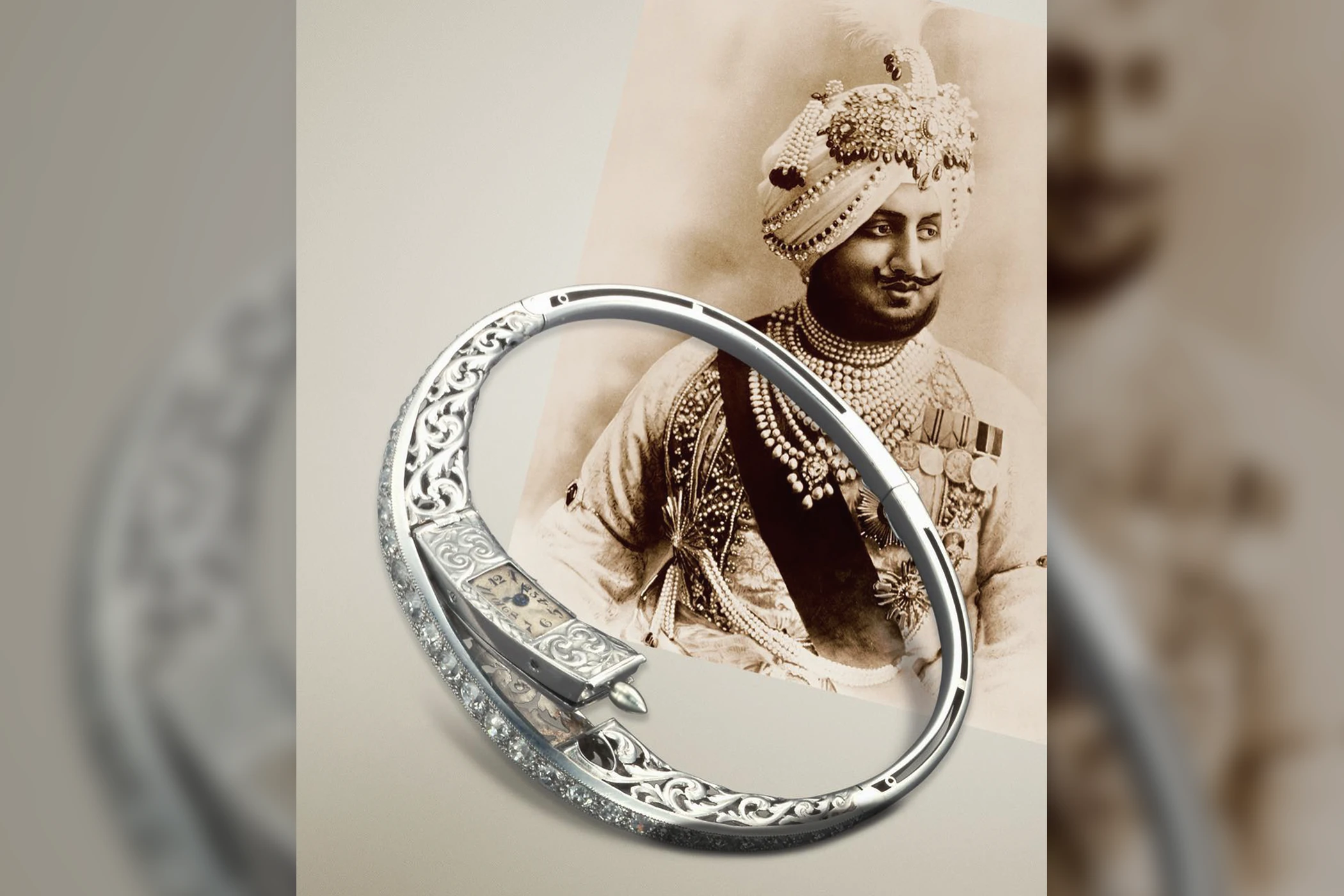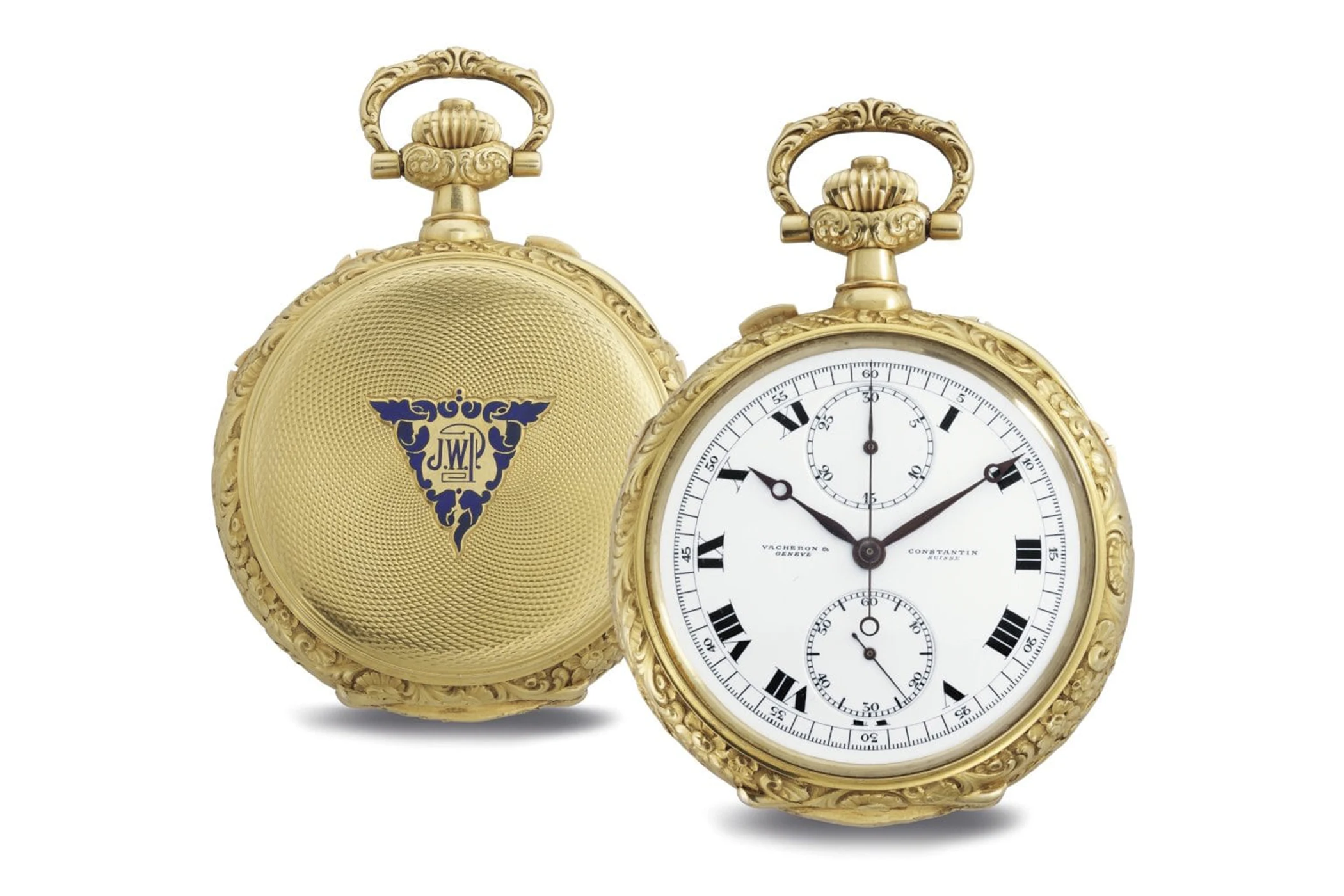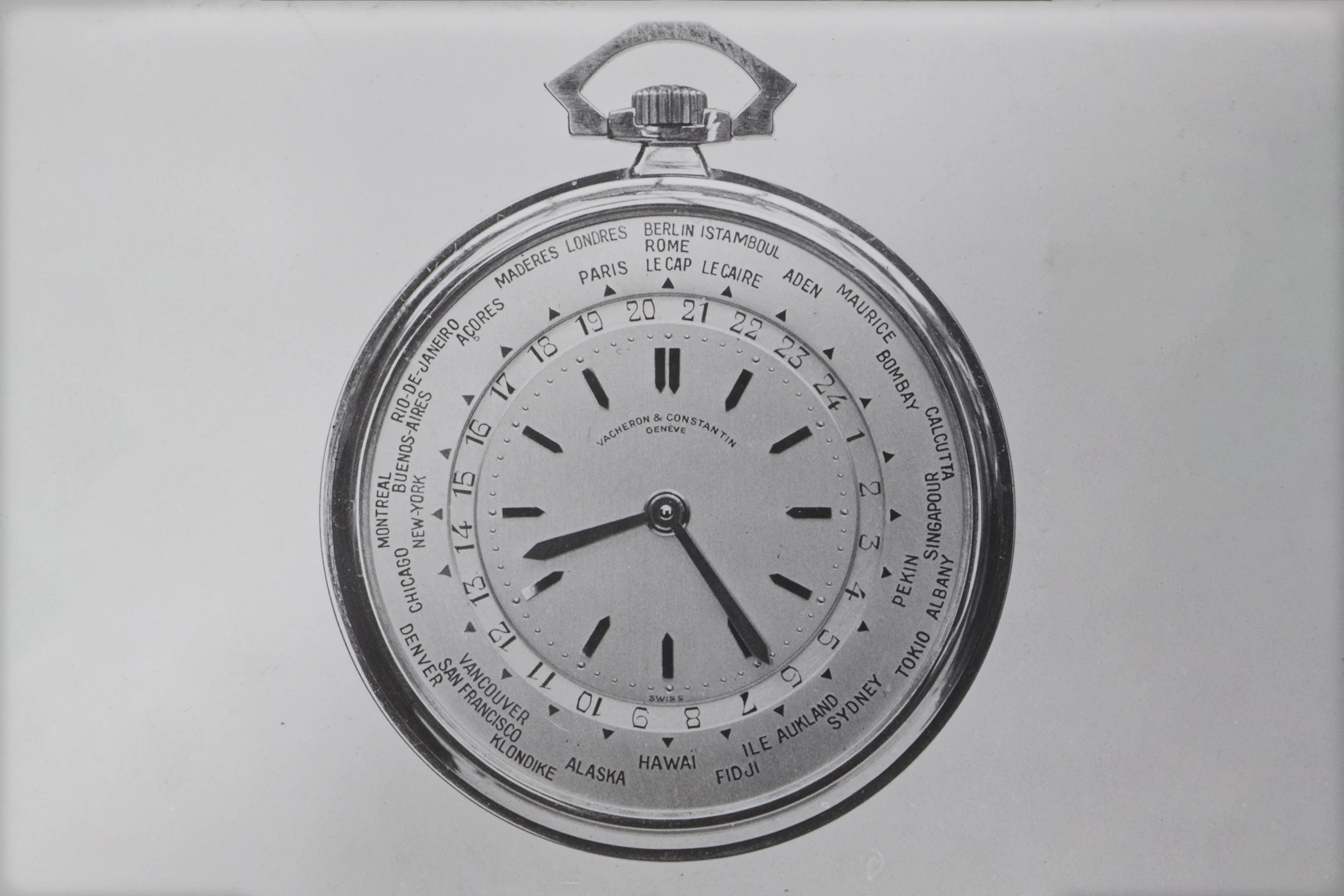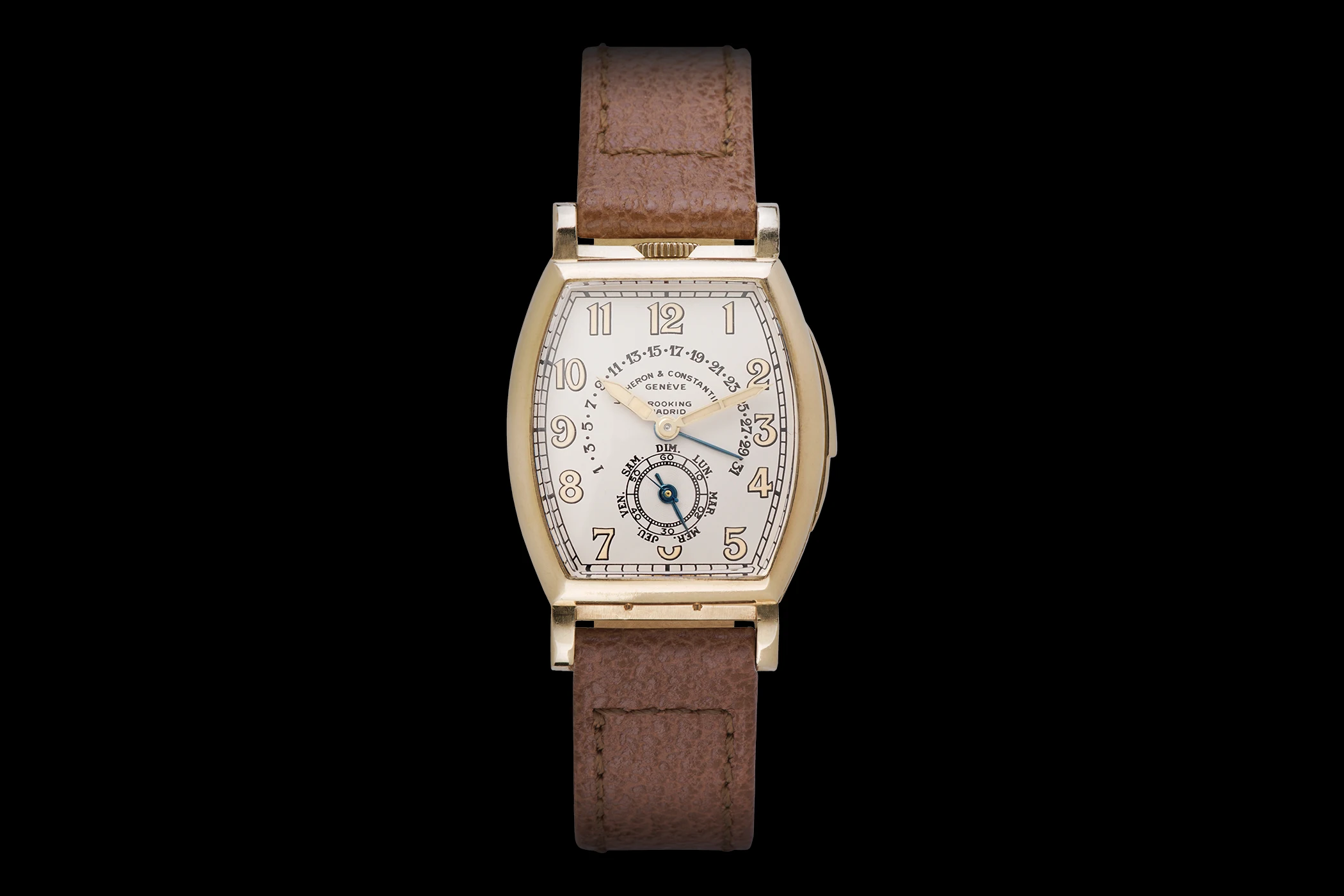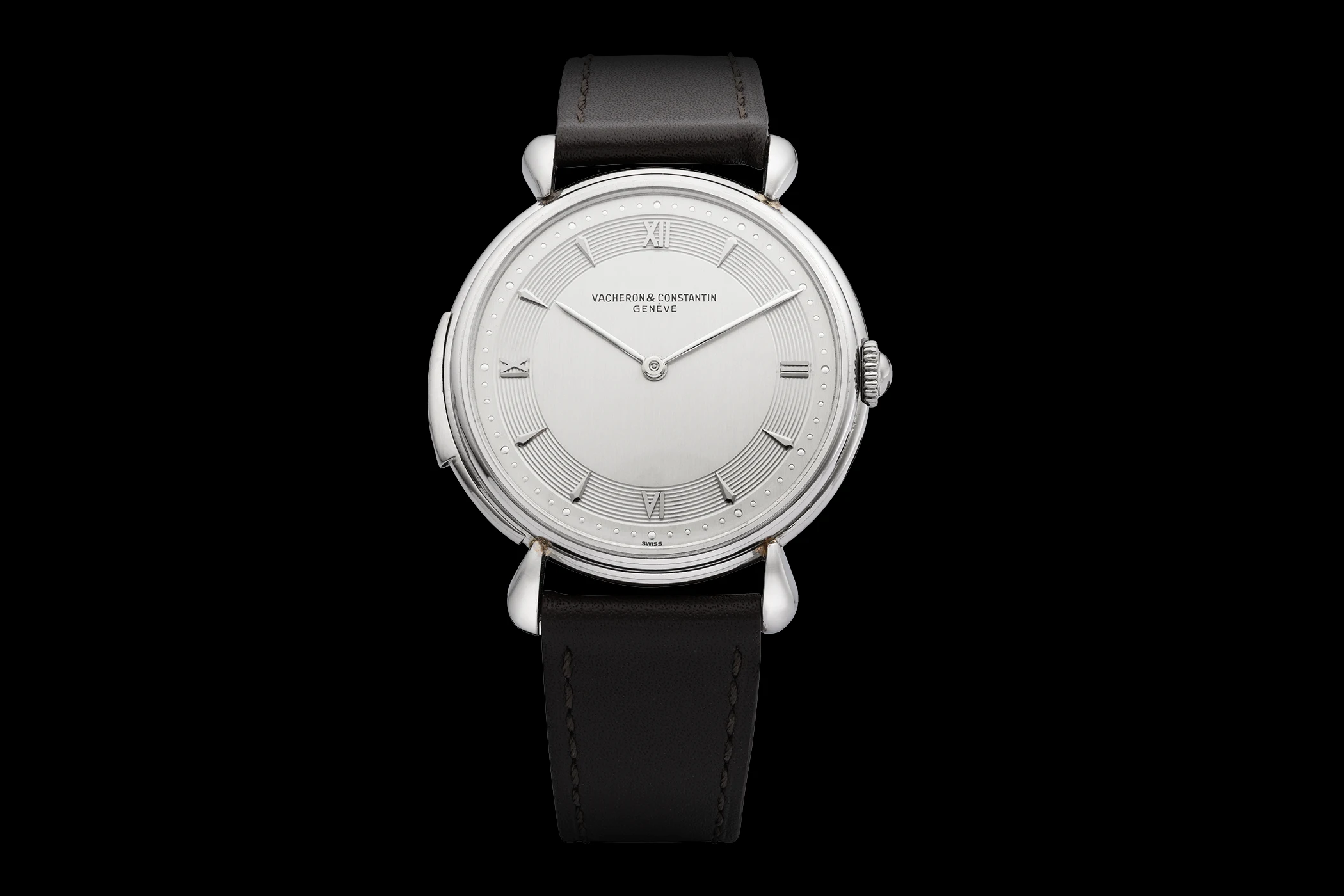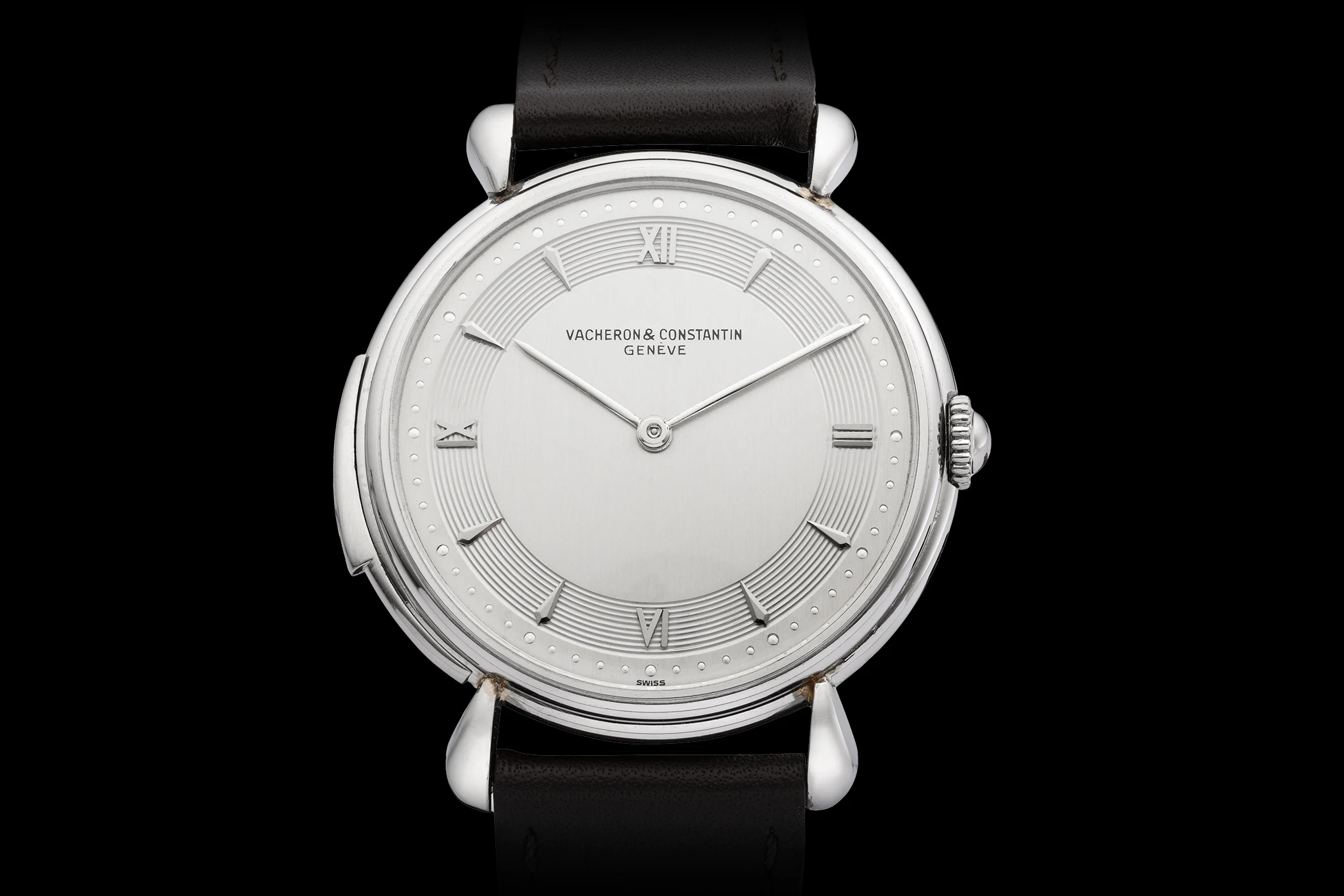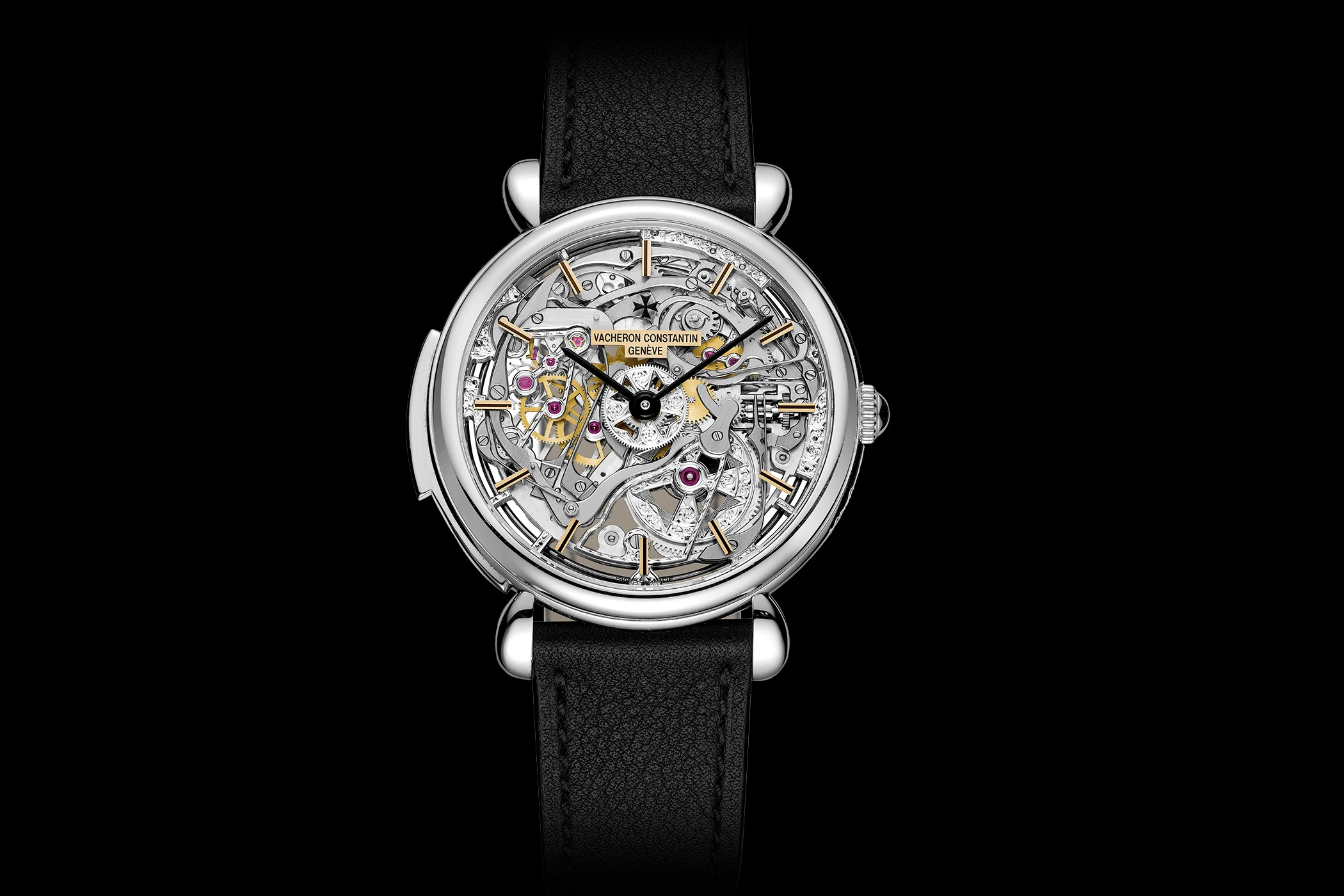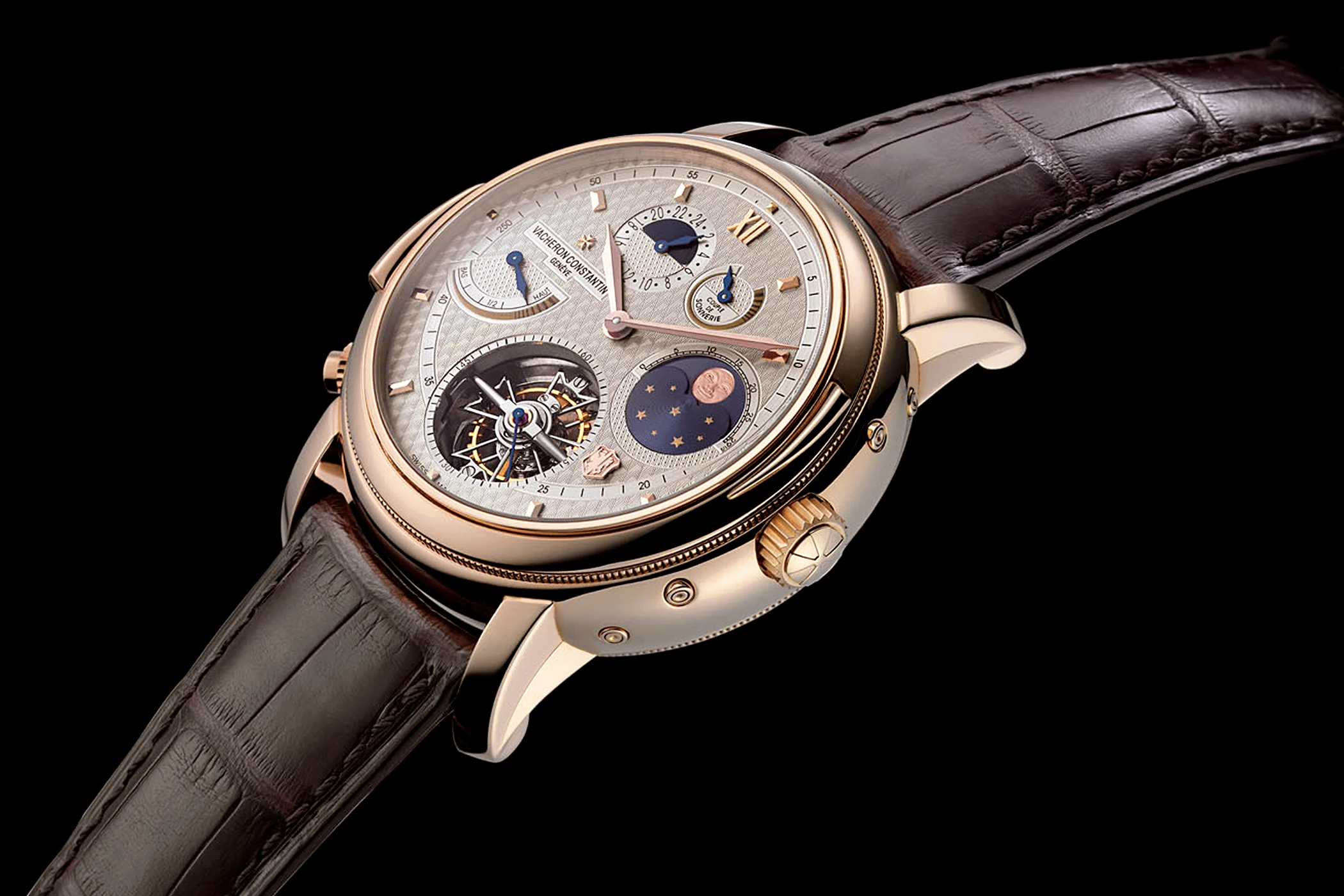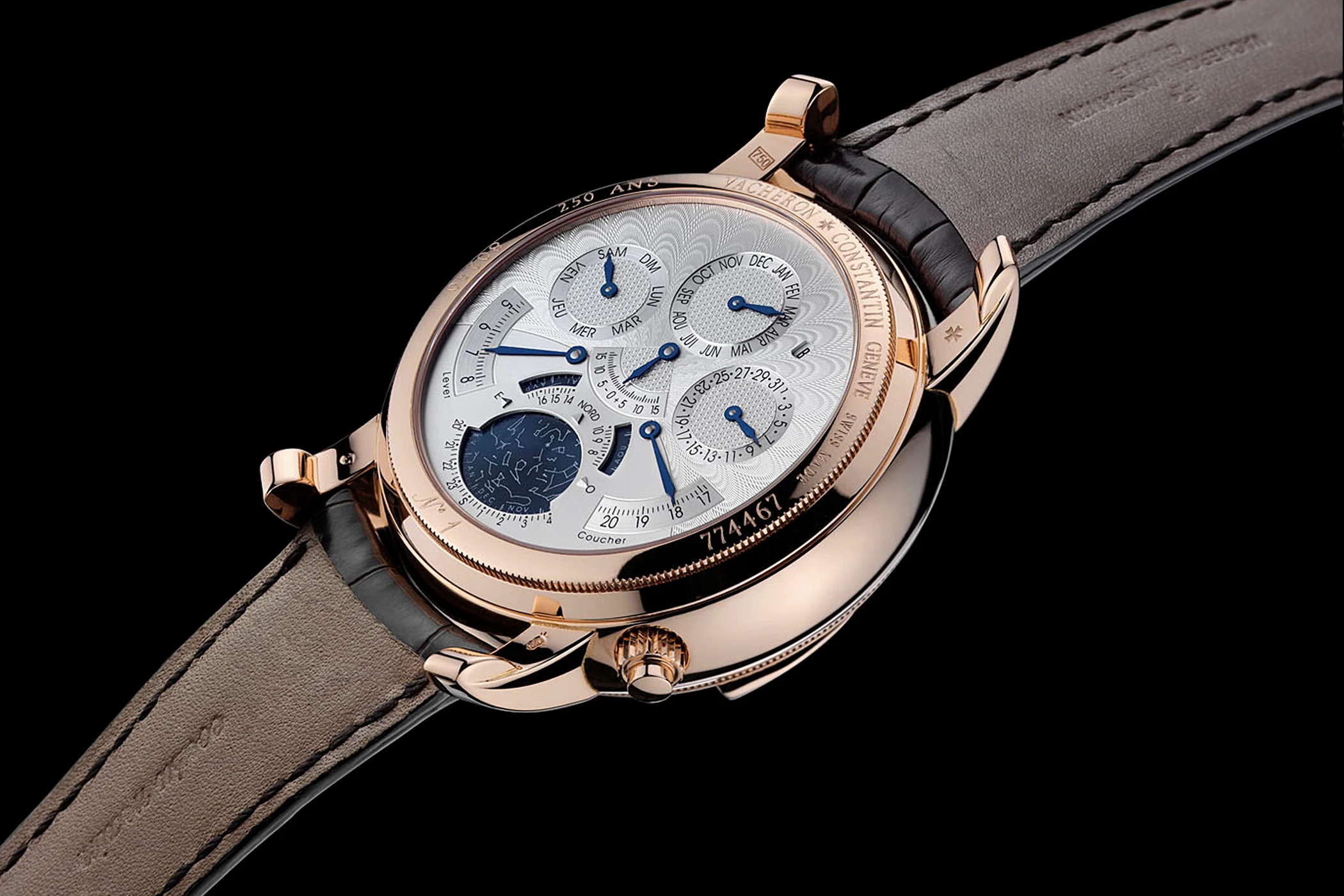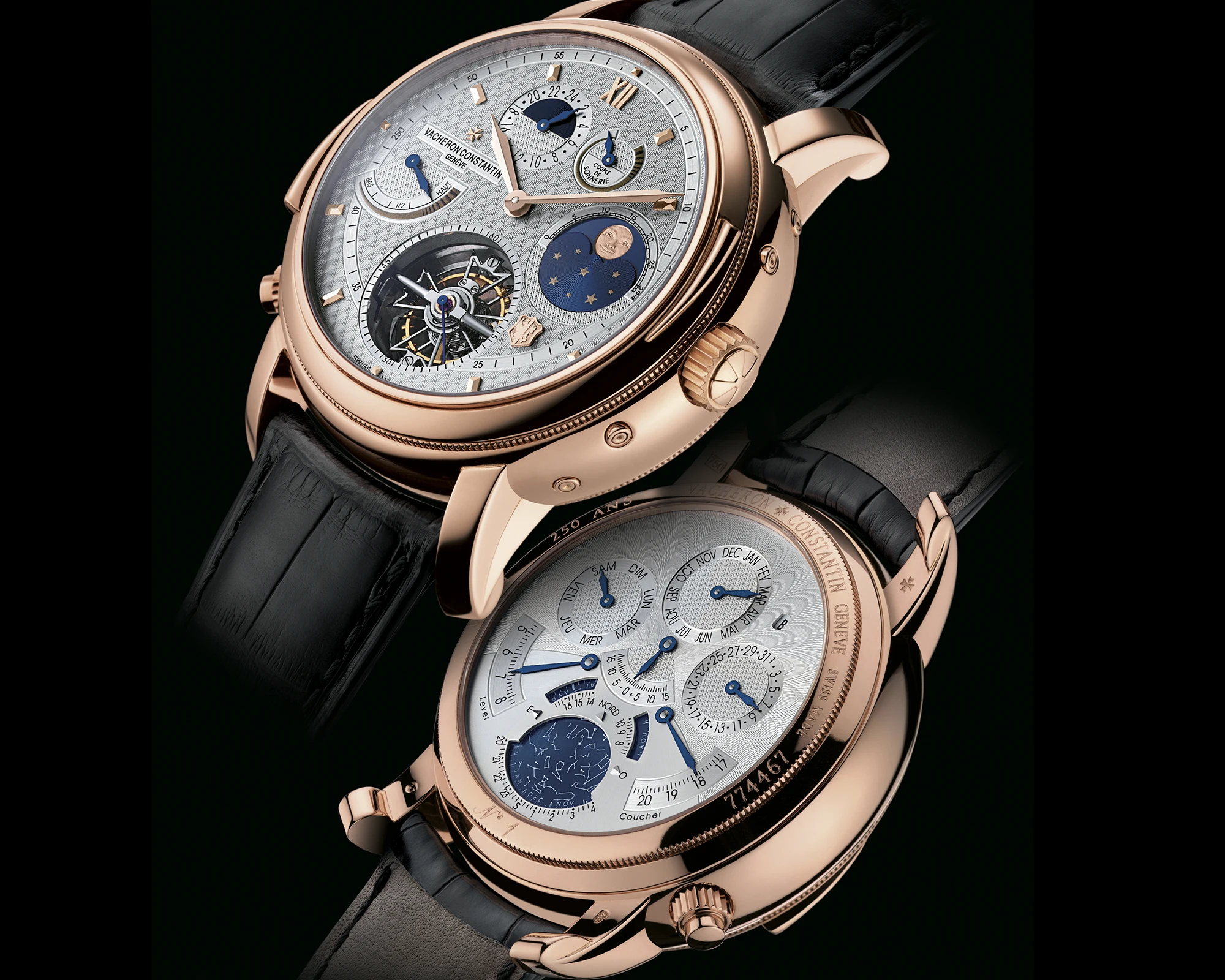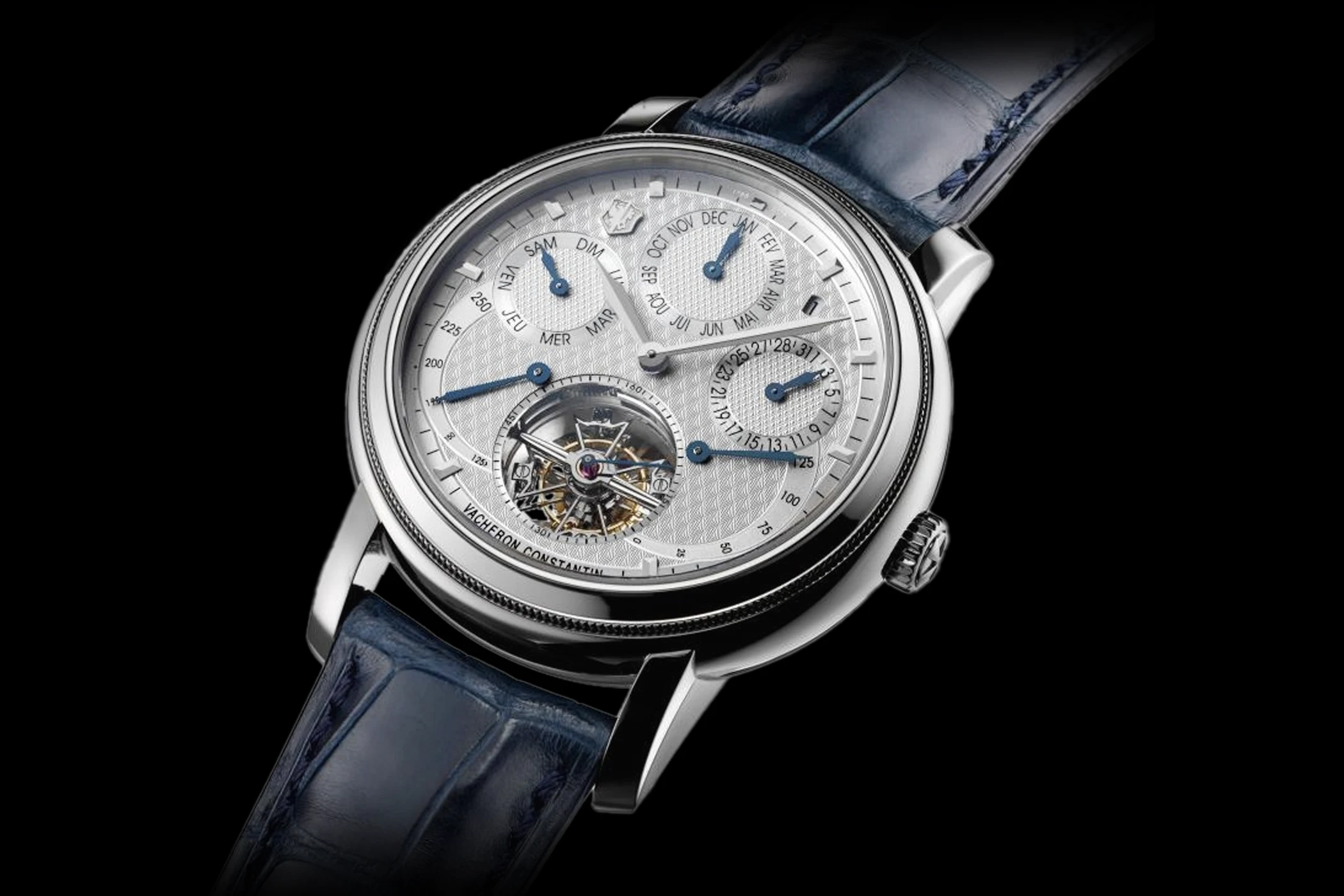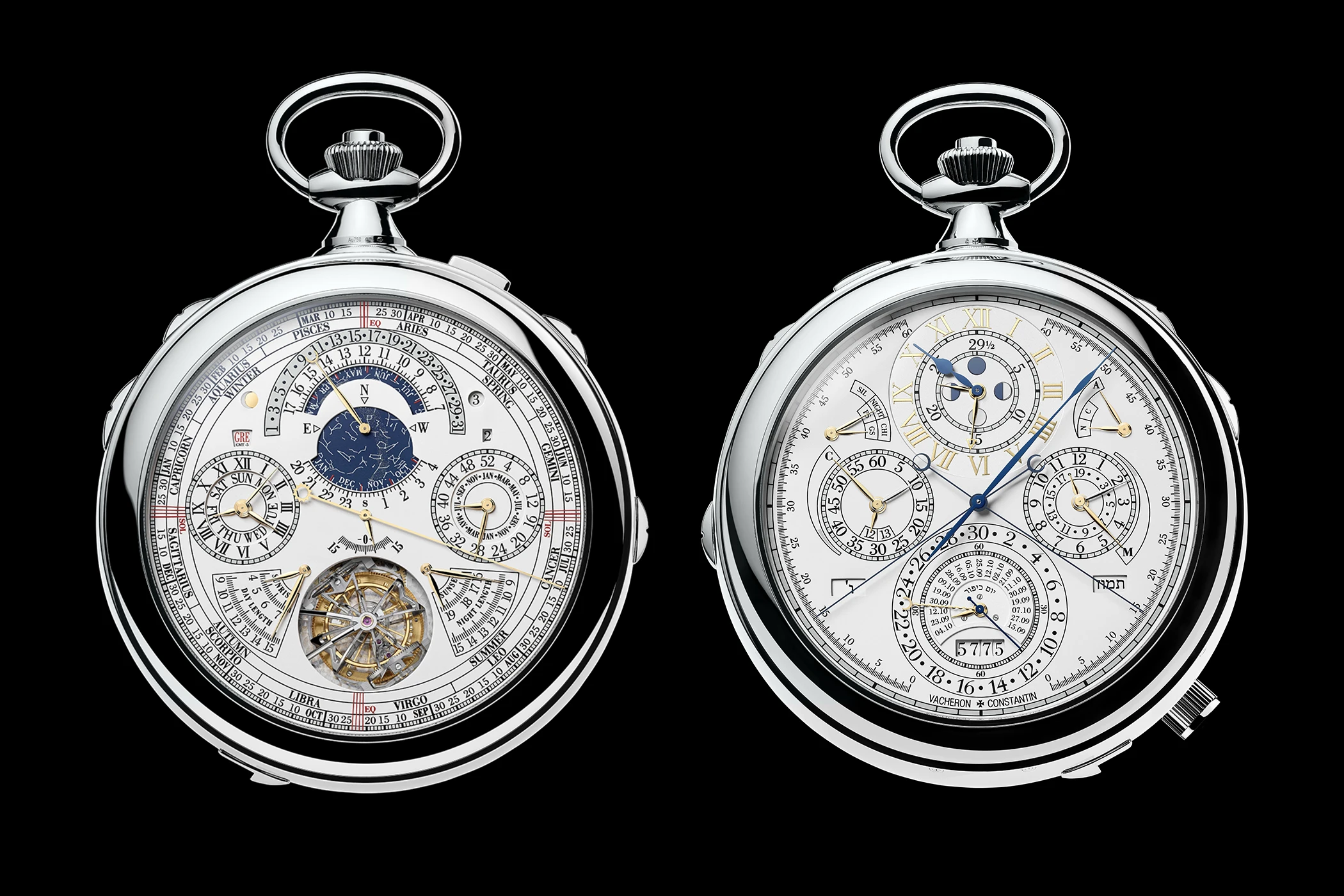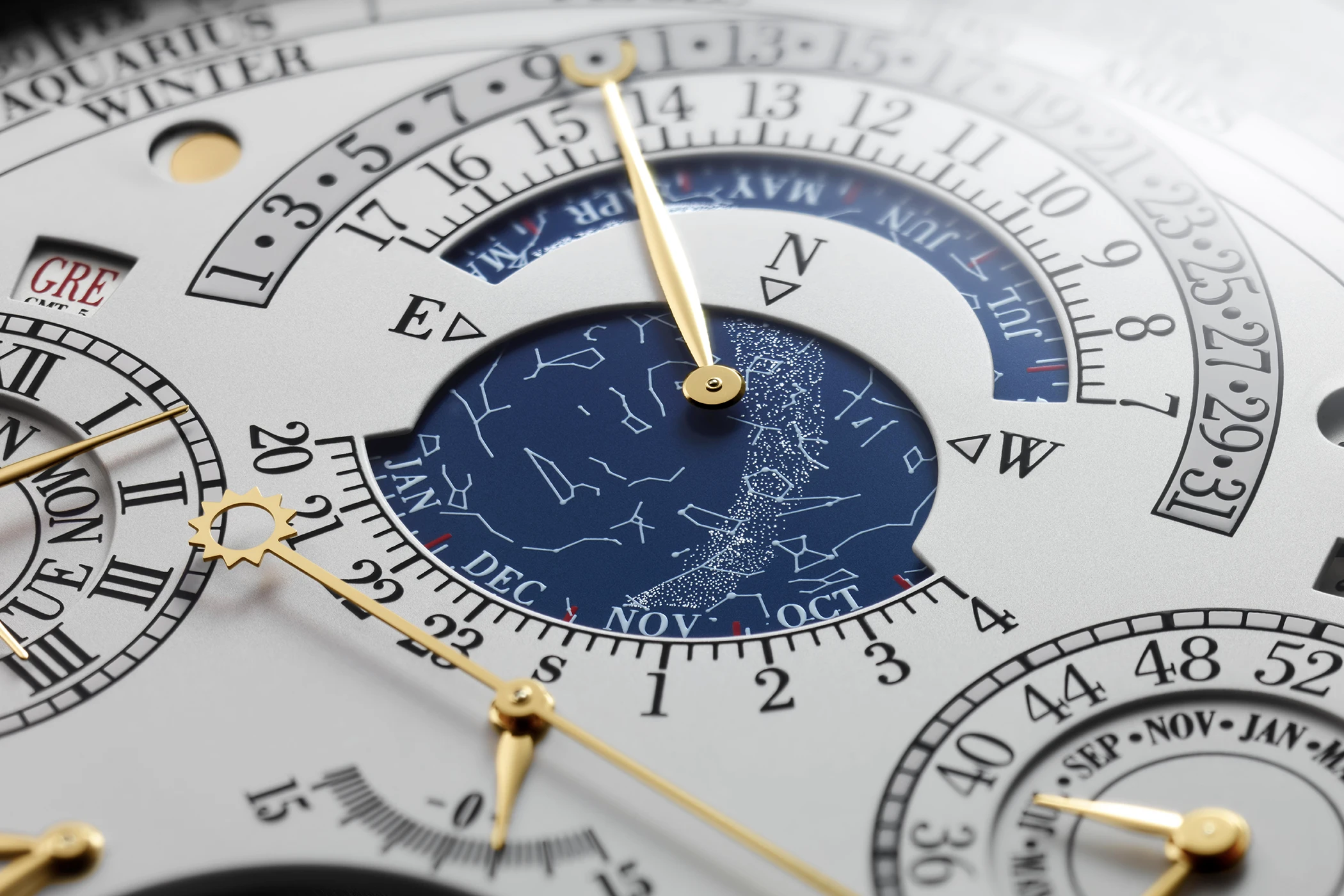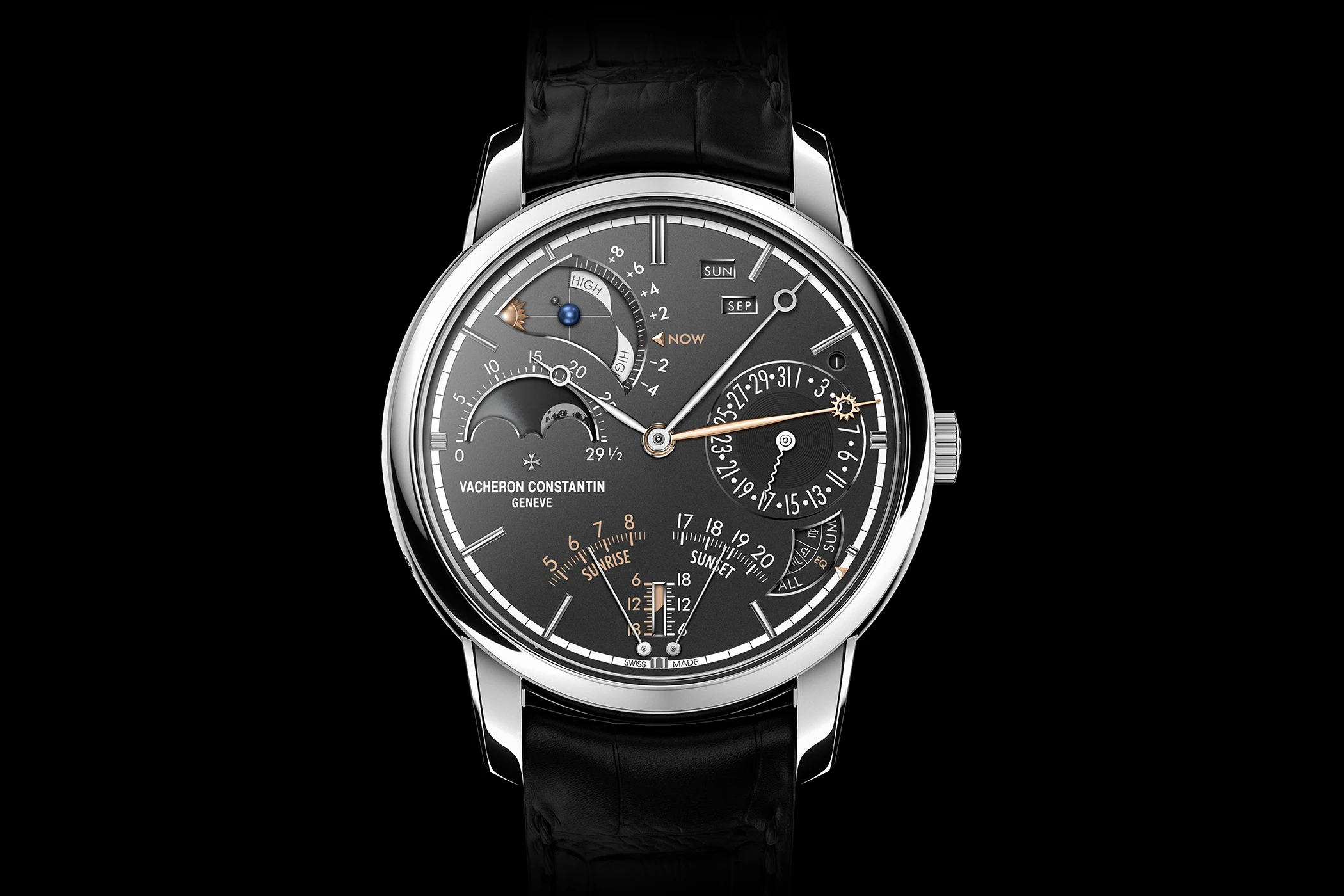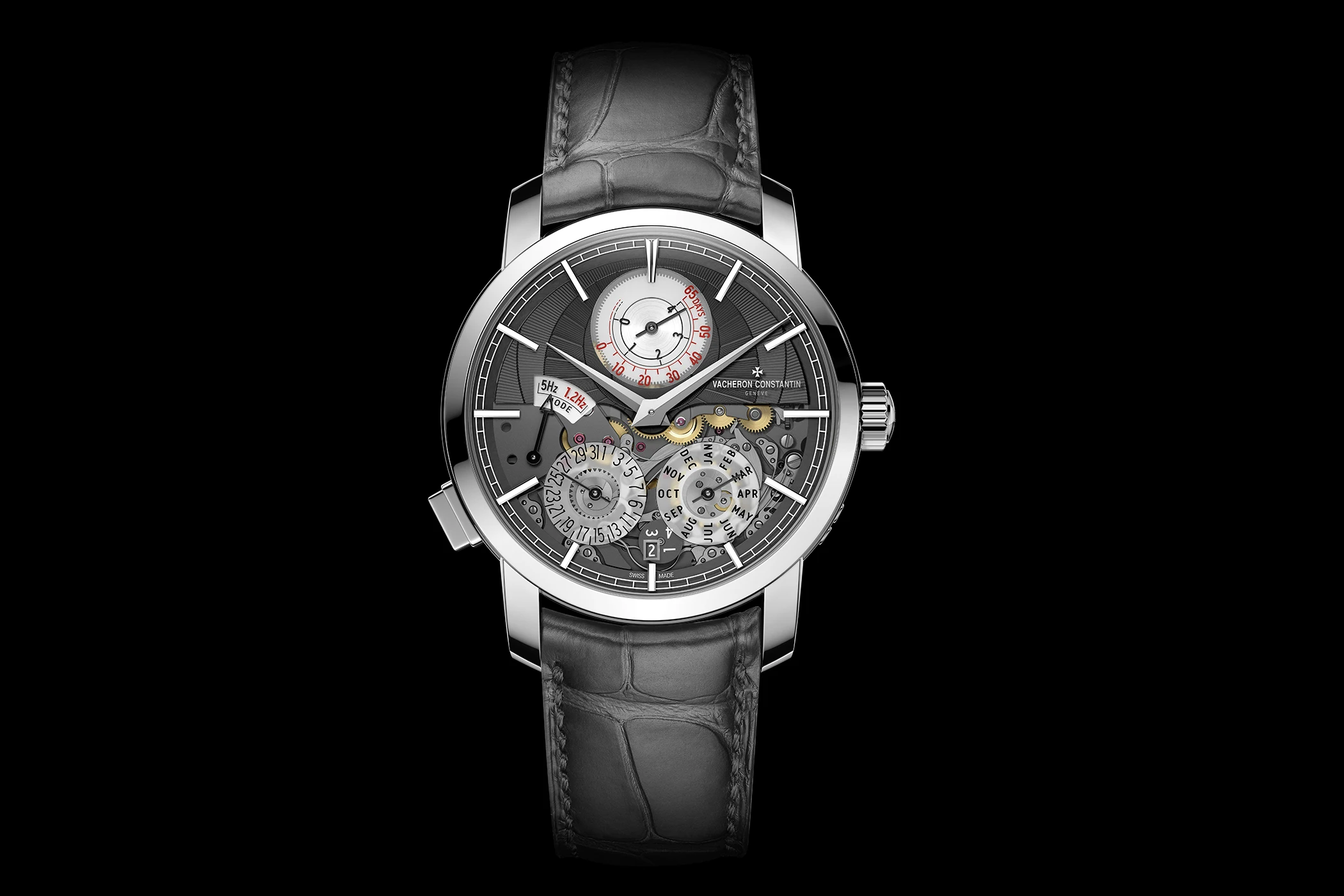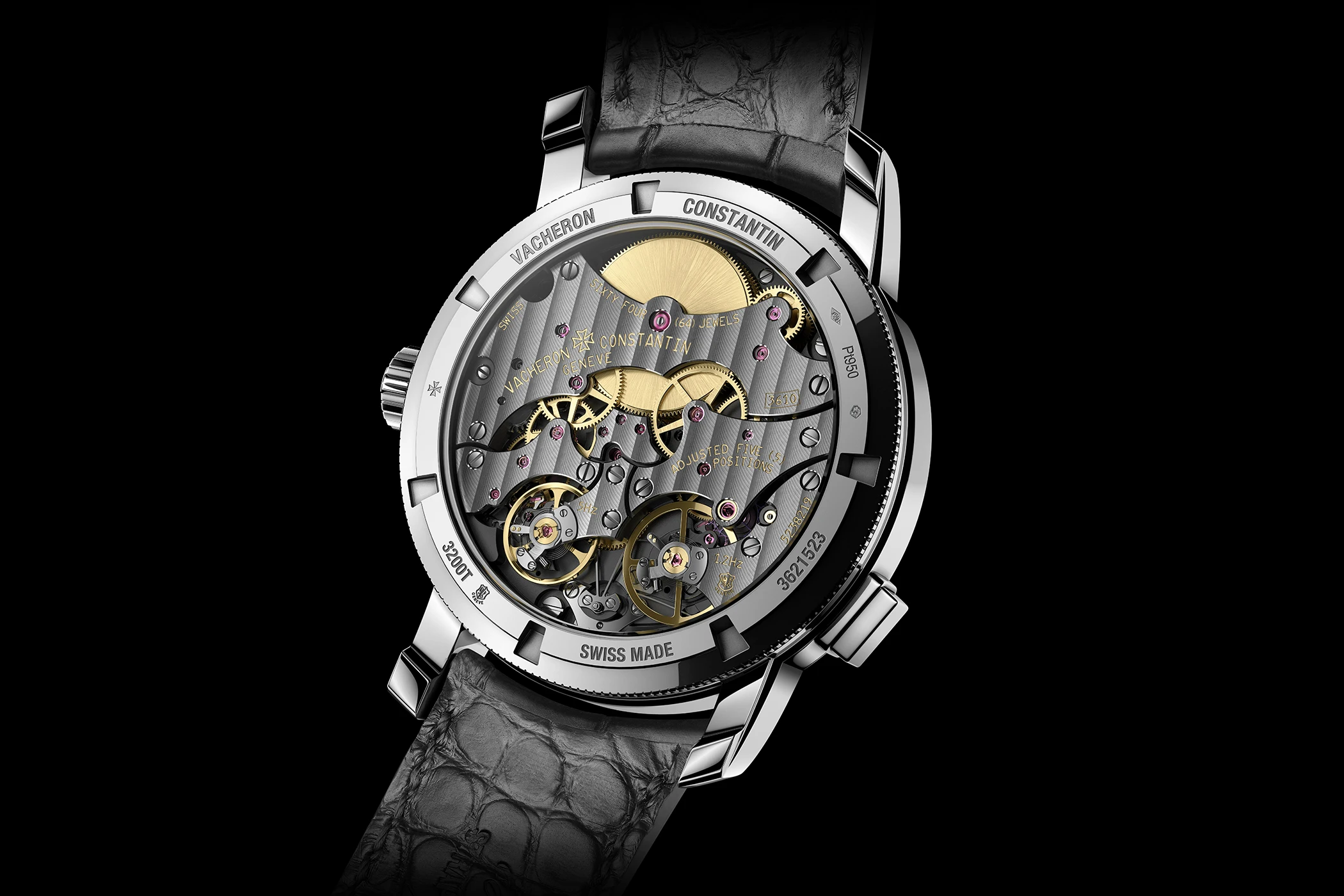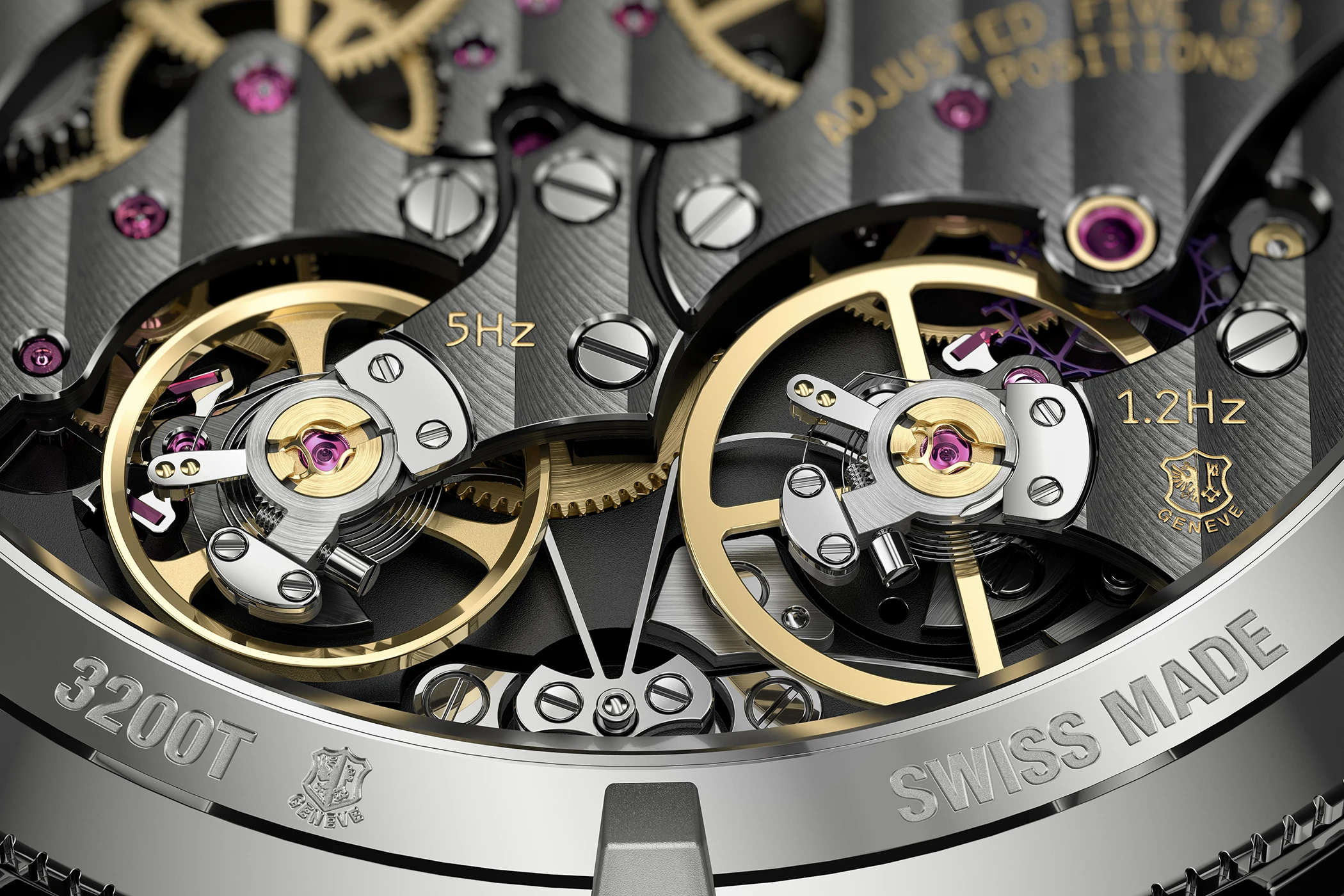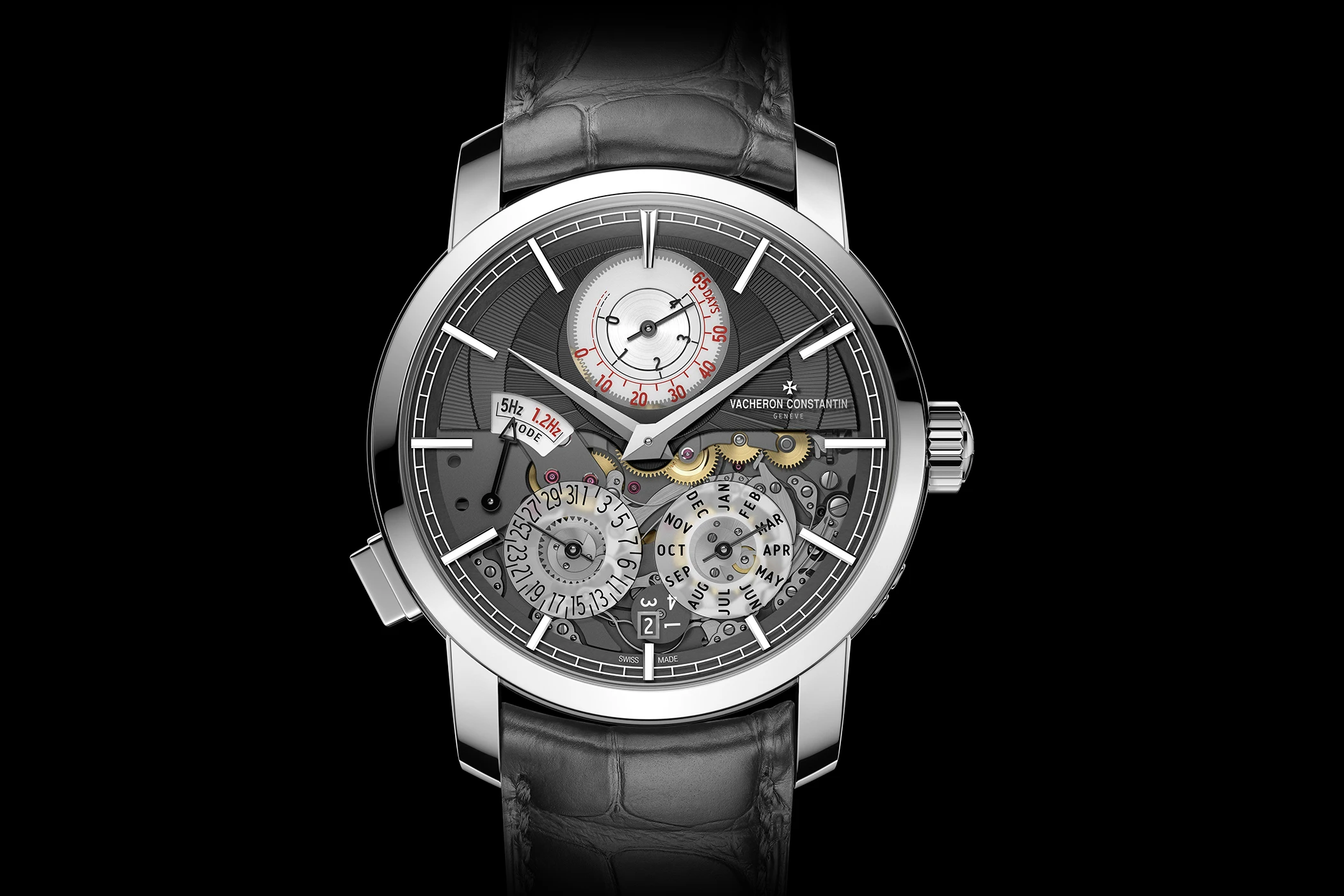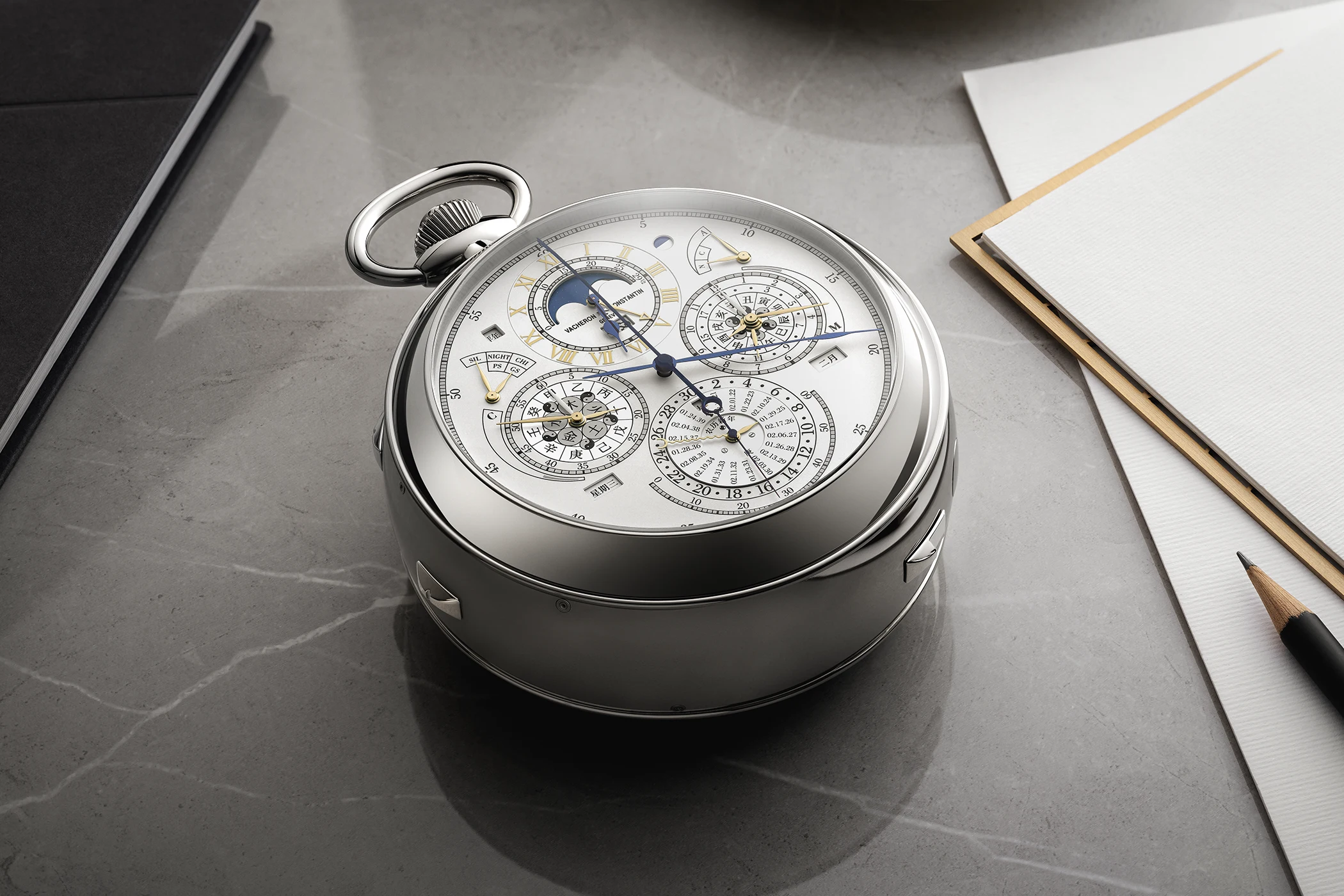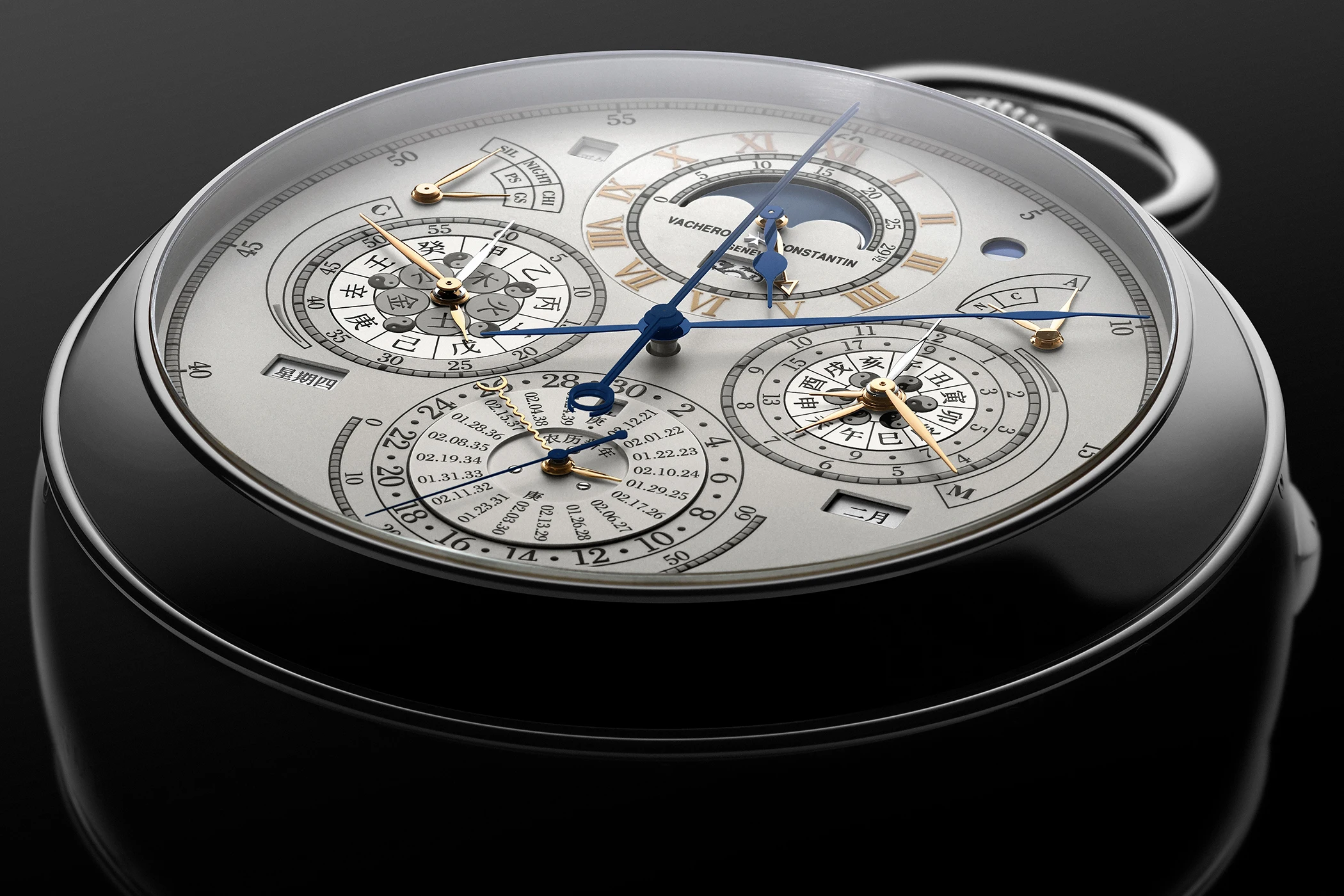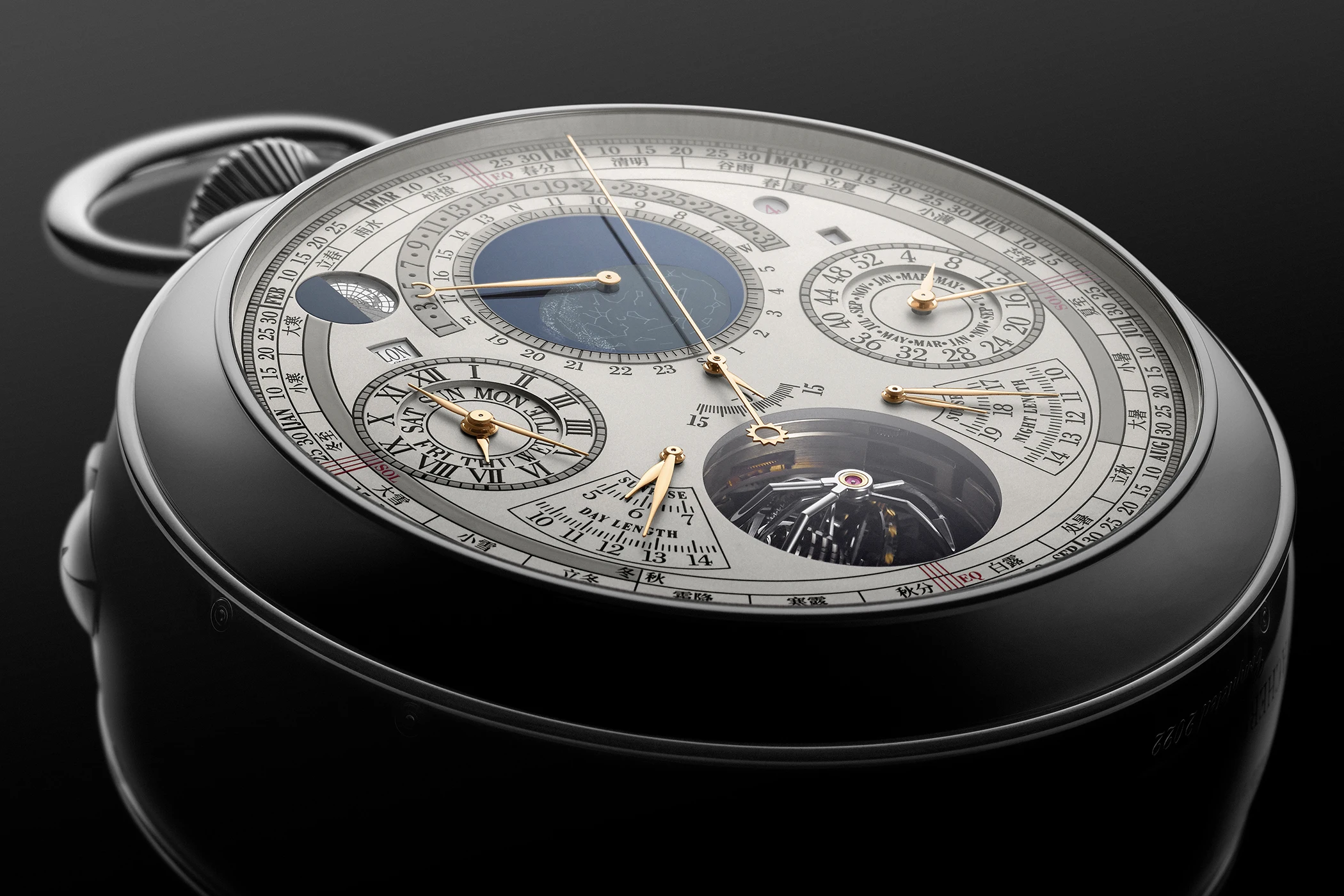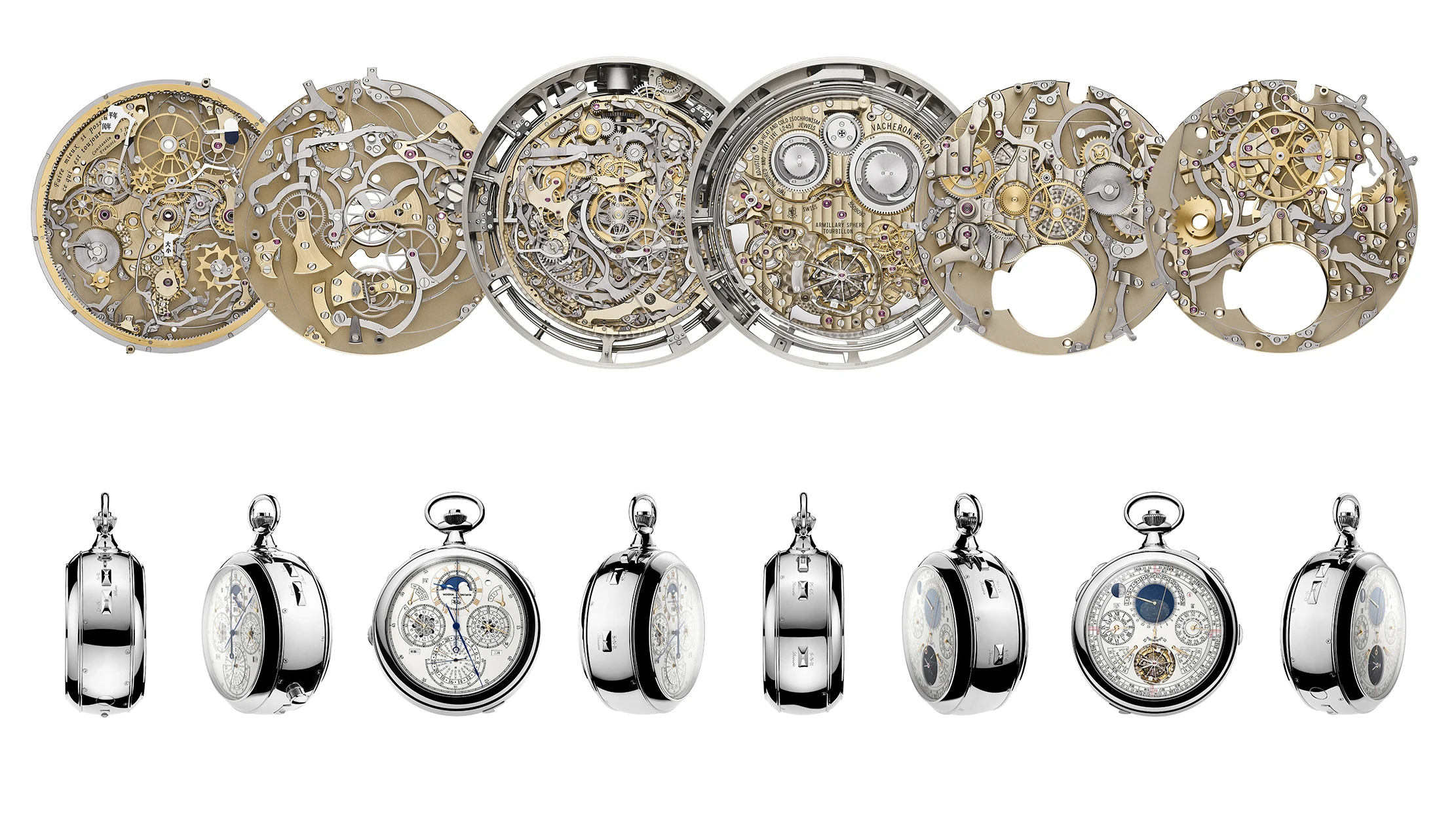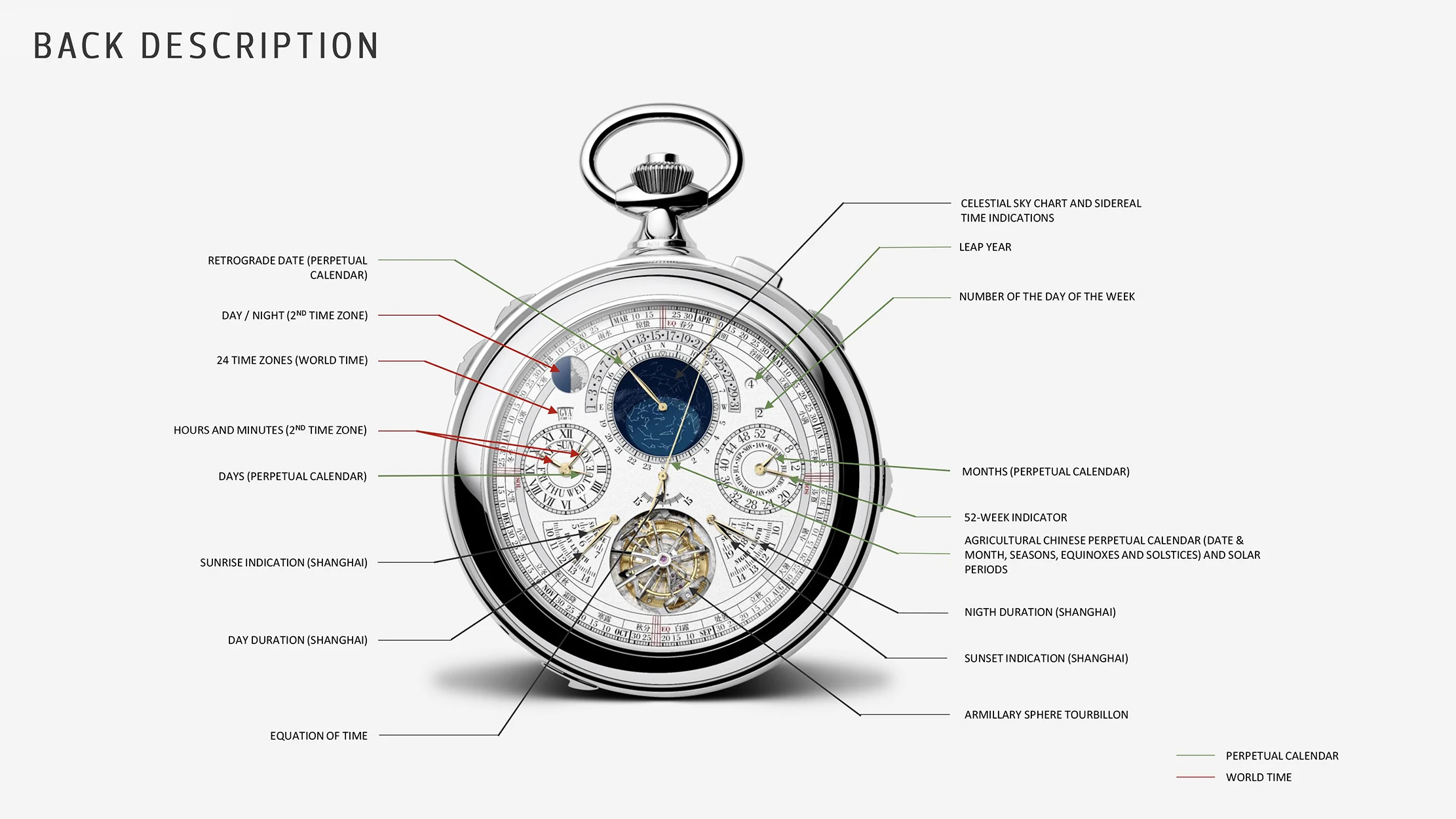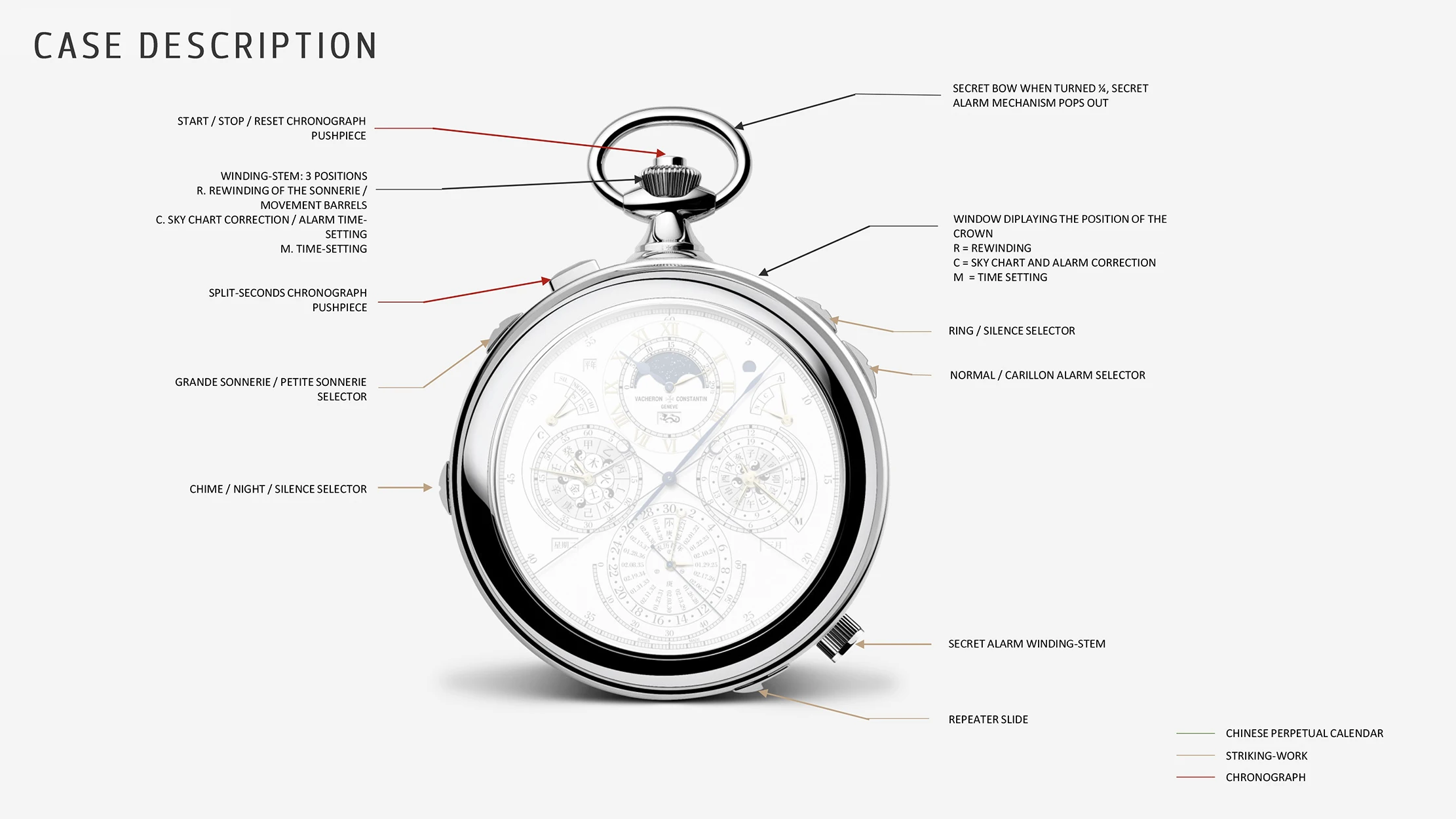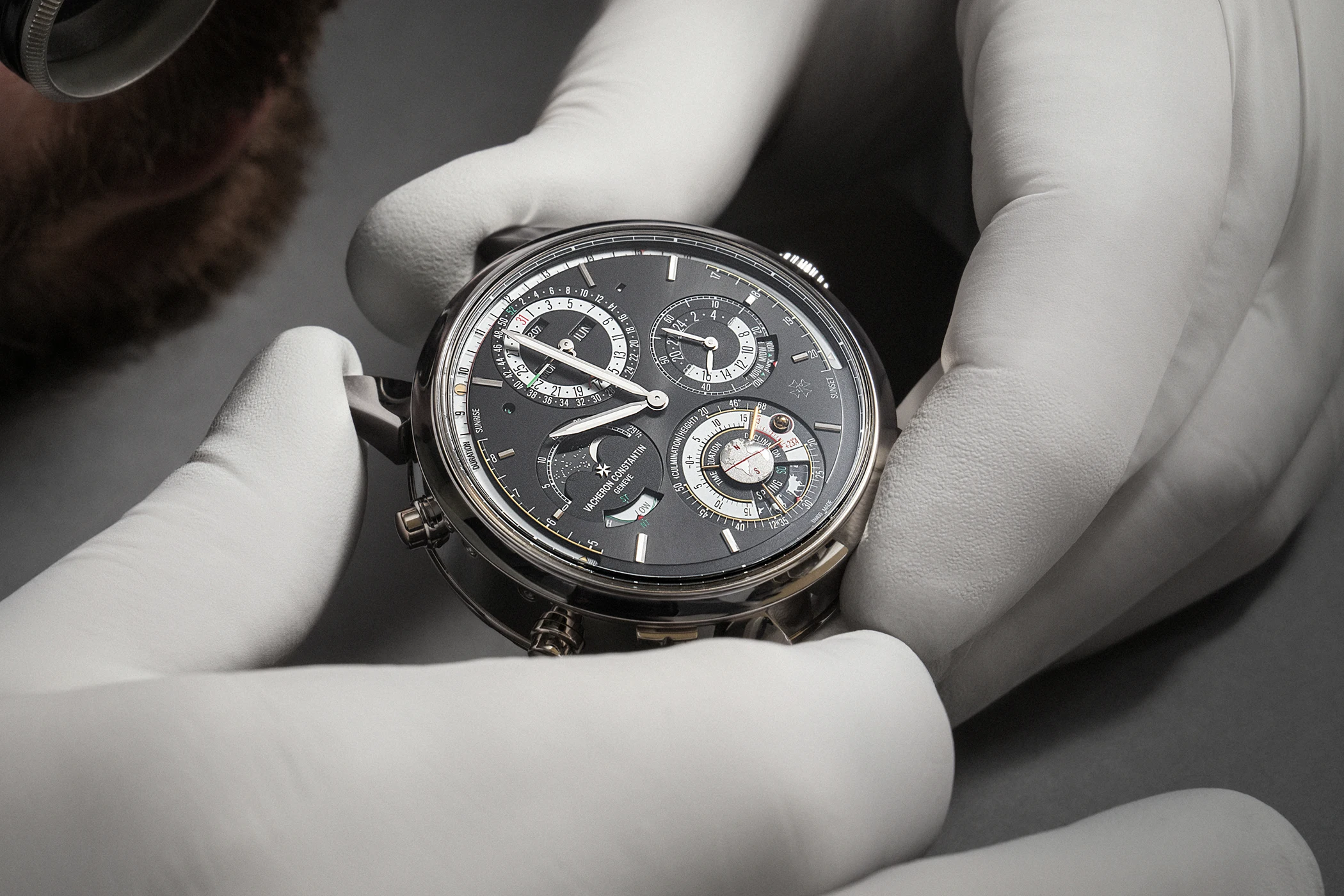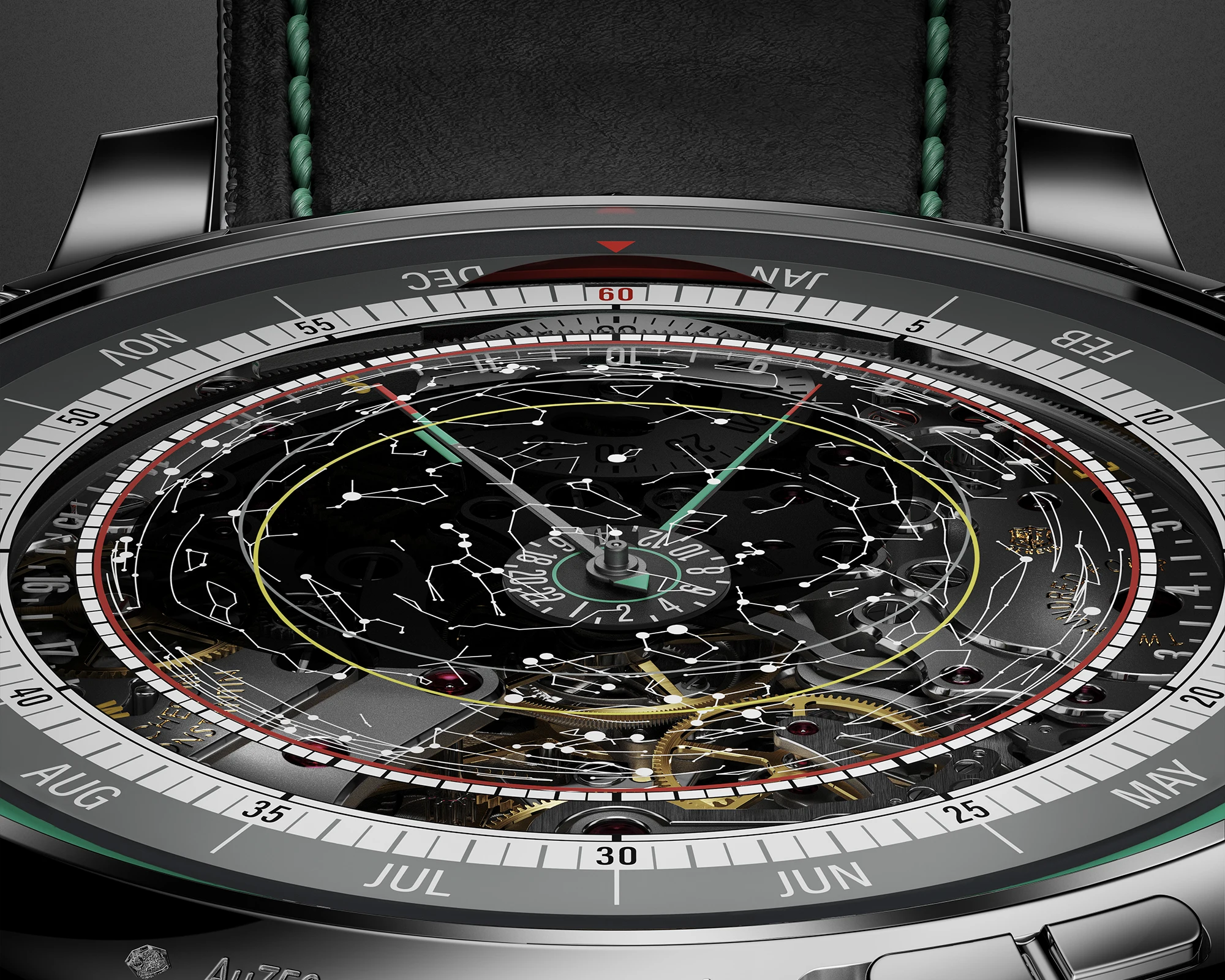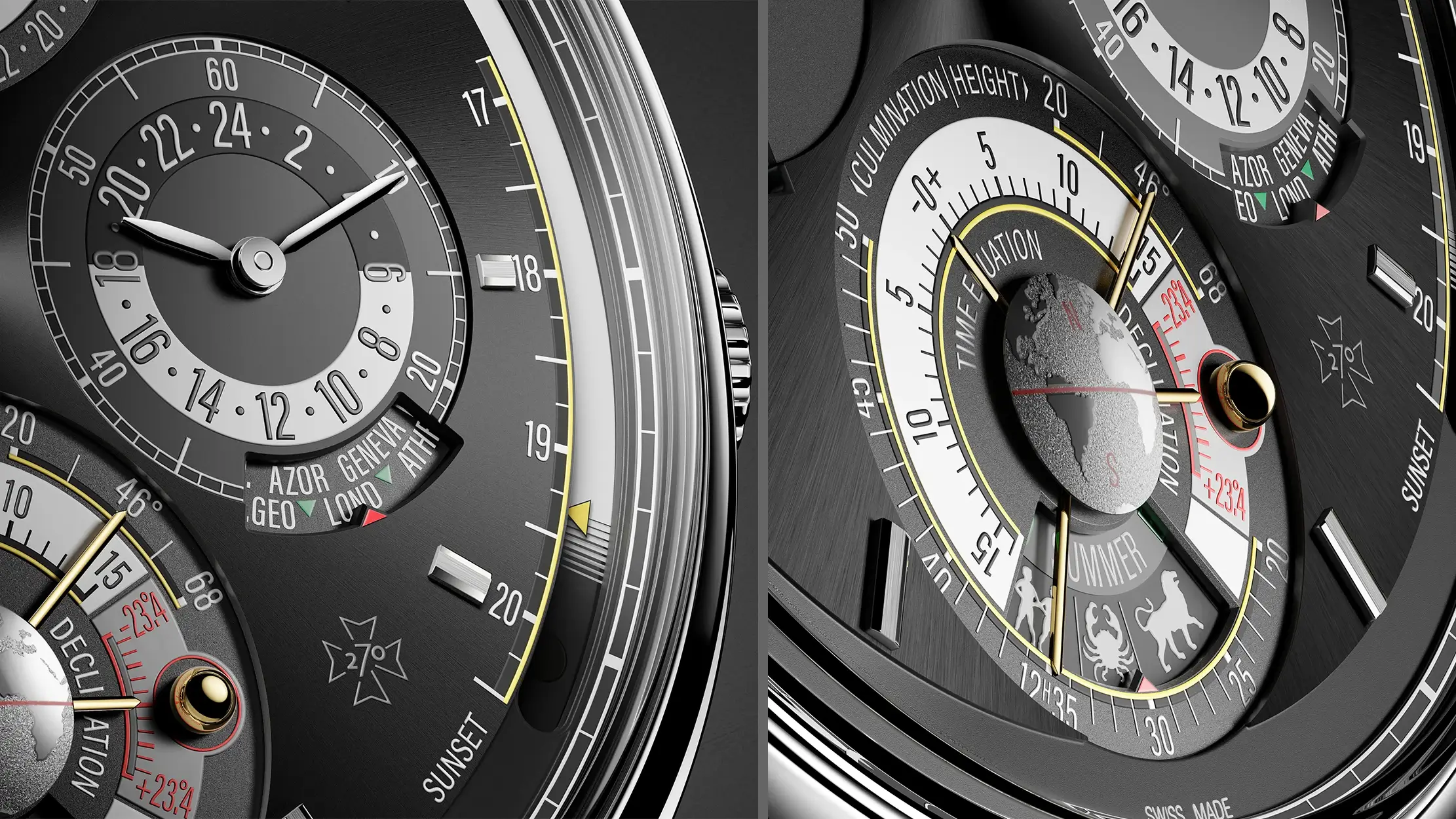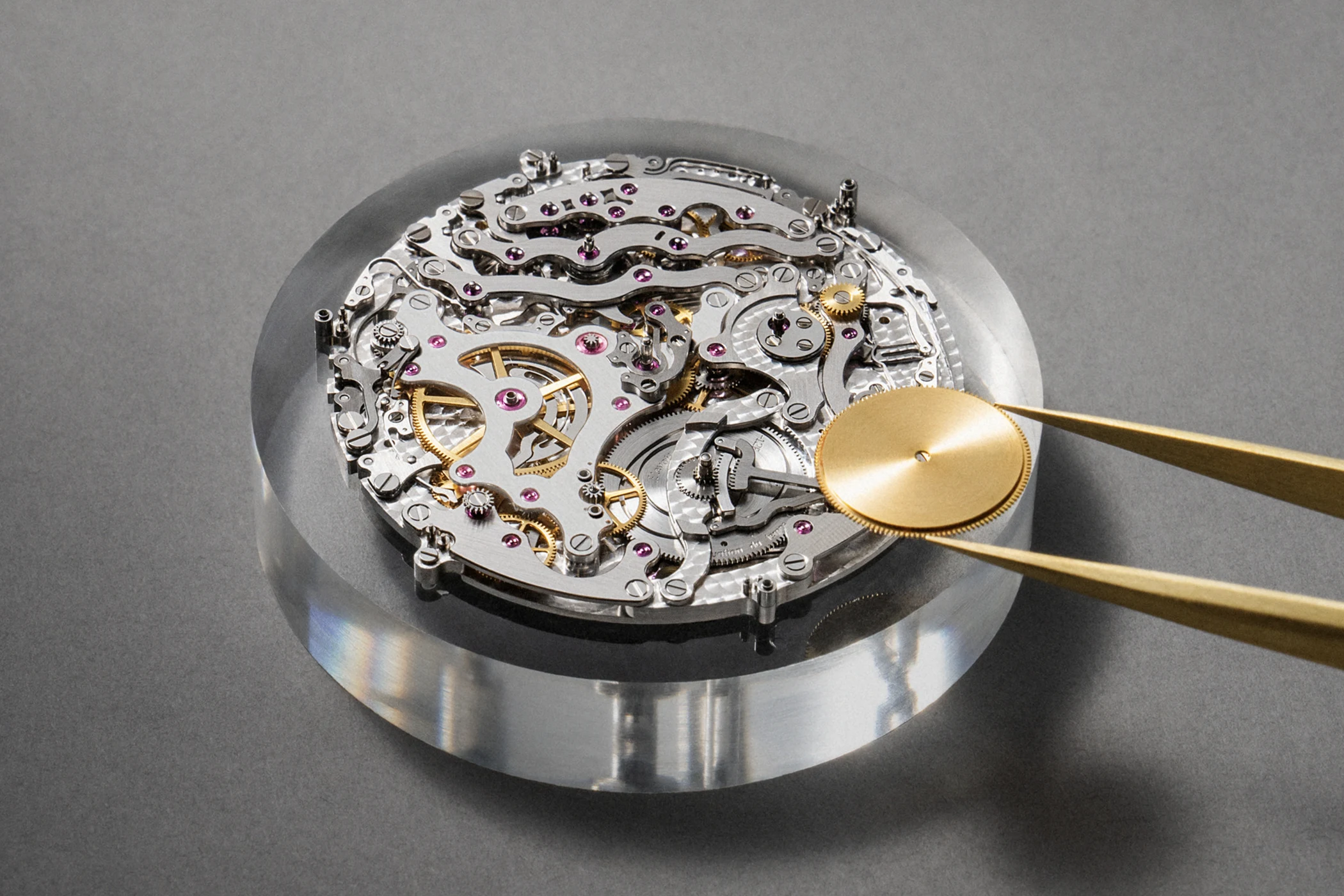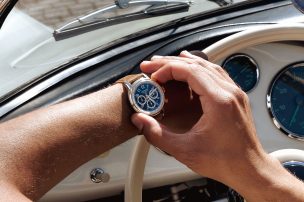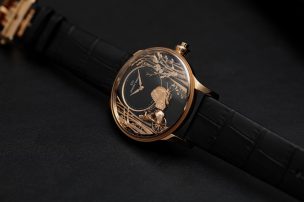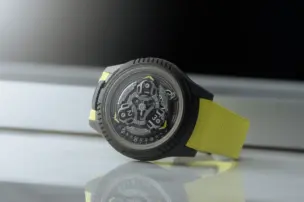
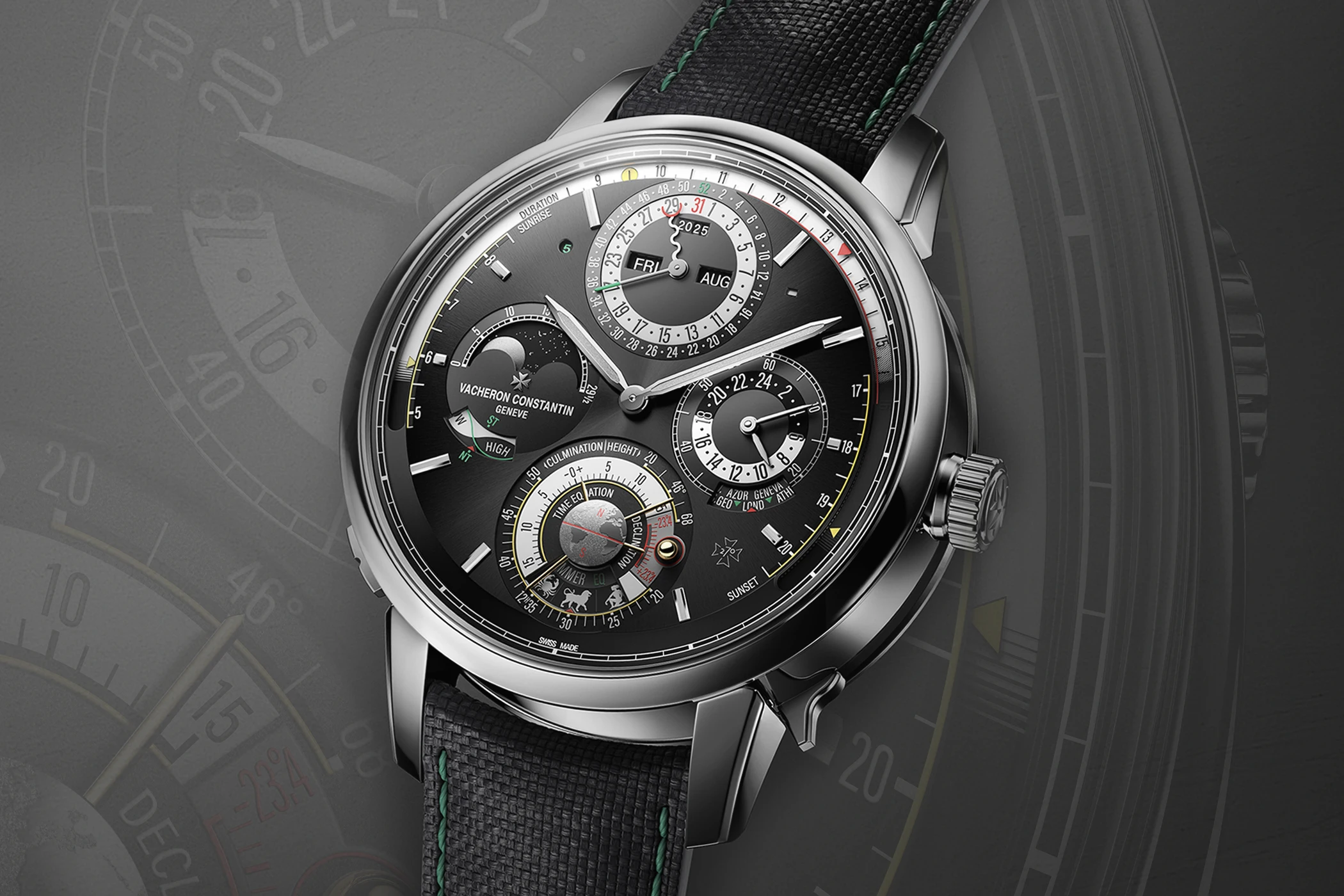
Vacheron Constantin: The Maison’s 11 Most Record-Setting Watches
Vacheron Constantin will celebrate its 270th anniversary in 2025. The origins of the manufacture date back to 1755, when the watchmaker Jean-Marc Vacheron opened his workshop in Geneva and hired his first apprentice.
Complications and technical innovation became a hallmark of Vacheron Constantin at an early stage. As early as 1790, the Geneva manufacture developed its first watch with a calendar function. In 1869, the brand fitted a pocket watch with a chronometer escapement, thereby improving its timekeeping precision.
The company also devoted itself early on to producing particularly thin and compact movements in order to enhance the elegance of its watches. In 1914, Vacheron Constantin created a small rectangular ladies’ movement known as the “Tuyau” (“Tube”), which measured 26 mm in length and just 6.5 mm in width. And in 1955, the manufacture constructed the thinnest movement in the world: the hand-wound Calibre 1003, standing only 1.64 mm high.
Credit © thehourlounge
Another important field for the brand—both historically and today—has been the creation of bespoke, often highly complicated timepieces. As early as 1918, Vacheron Constantin delivered a pocket watch featuring a chronograph and striking mechanism to the renowned collector James Ward Packard. This significant timepiece was auctioned in 2011 for a record price of 1.76 million US dollars.
Vacheron Constantin’s 11 most fascinating record-setting watches
1932: First Universal Time Watch with 24 Time Zones – Ref. 3372
In 1932, Vacheron Constantin created the first watch capable of displaying all 24 time zones simultaneously. Its world-time display was based on a patent filed the previous year by Louis Cottier. The complication—known at the time as Universal Time or International Time—features a central dial with hour and minute hands indicating local time. Surrounding this central dial is a 24-hour ring that rotates anticlockwise, completing one full revolution in 24 hours. Around this ring, the names of 24 cities and regions are printed on the dial. This allows the current time in each location to be read directly. The minute hand for local time applies to all time zones, ensuring an accurate reading for all 24 time zones.
Vacheron Constantin’s solution—both functional and aesthetically refined—became the blueprint for later world-time watches created by nearly all major watchmaking houses.
1940: First Wristwatch with Minute Repeater and Retrograde Date – “Don Pancho”
In the early days of wristwatches, major complications rarely found their way into the smaller movements of the time. All the more remarkable, then, is the wristwatch commissioned in 1935 through the retailer Brooking in Madrid: a Vacheron Constantin timepiece featuring a minute repeater and the first retrograde date display ever fitted to a wristwatch. At the client’s request, Reference 3620 chimes the time with unusually deep tones.
The lower half of the dial displays the seconds and the day of the week. The retrograde date, indicated from the centre, ensures that the calendar indications remain legible at all times without overlapping. Further distinctive elements include the tonneau-shaped case and the crown positioned at twelve o’clock. The caseback bears the blue enamelled initials of the client, Francisco Martinez Llano—known as Don Pancho. Delivered under the reference bearing his name, the watch was supplied with five additional straps and two dials, one of which featured the then-uncommon luminous numerals and matching luminous hands.
Vacheron Constantin had implemented retrograde indications previously in pocket watches, and they remain a defining design feature of the manufacture to this day—whether as jumping hours with retrograde minutes or in the form of the “Bras en l’Air” (“arms in the air”) display, in which two hands, often styled as the arms of a figure, indicate the hours and minutes on retrograde scales when a button is pressed. As early as 1930, Vacheron Constantin had realised this type of display in a pocket watch.
1943: Thinnest Minute Repeater – Ref. 4261
As early as 1806, Vacheron Constantin produced its first striking watch—a quarter-hour repeater. Minute repeaters and sonneries would later become highly sought-after creations of the Geneva manufacture. The repeater is considered the most elegant of all complications because it does not interrupt the purity of the dial with additional displays.
It is therefore fitting that Vacheron Constantin combined it with another refined speciality: ultra-thin construction. Even though this is not a complication in the classical sense—that is, an additional function or display—building an ultra-thin watch is every bit as demanding in terms of construction, finishing and assembly as integrating an additional mechanism.
In 1943, Vacheron Constantin introduced Reference 4261, at the time the thinnest minute repeater ever made. The movement measures just 3.2 mm in height—a remarkable achievement considering the numerous components required for a minute repeater: a slide to tension the spring, levers that read the time, multiple hammers, gongs, and a centrifugal governor ensuring a slow and even striking rhythm.
The entire watch is exceptionally slim and compact, with a diameter of 36 mm and a total height of only 5.25 mm. Today, Reference 4261 is regarded as a highly desirable collector’s piece: fewer than 40 examples were produced.
1994: Thinnest Minute Repeater – Ref. 30030
The calibre 1755, developed by Vacheron Constantin in the early 1990s and inspired by the historical Reference 4261, was—at just 3.28 mm in height—the thinnest minute repeater of its time. The movement was used in models with a closed dial (Ref. 30010) and in a version combined with a perpetual calendar (Ref. 30020). The most renowned, however, is Reference 30030, featuring a fully visible and skeletonised movement. Across all three references with this ultra-thin minute repeater, only 200 pieces were produced in total.
Like ultra-thin construction, skeletonisation can be regarded as a complication in its own right: despite removing material, the movement must retain full functionality and structural integrity; at the same time, the aesthetic execution requires significant time and artisanal skill. This is especially true in the case of the 30030, whose particularly delicate skeletonisation includes hand-engraving on the bridges and even on selected wheels.
In a grand complication such as the minute repeater, this approach also offers the rare opportunity to observe the complex mechanism and the interplay of its components in action. Skeletonised movements of this calibre—mastered by only a handful of manufactures—remain one of Vacheron Constantin’s enduring specialities.
2005: Most Complicated Serially Produced Watch – Tour de l’Île
To mark its 250th anniversary, the manufacture developed Calibre 2750, featuring 16 complications displayed on a double-sided dial with 12 hands. It was the most complicated wristwatch ever produced in series, and its development required 10,000 hours of work.
The movement comprises 834 components. Its complications include a minute repeater, perpetual calendar, tourbillon, display of the visible night sky, sidereal time, equation of time, sunrise and sunset times, moon-phase indication, a second time zone and a power-reserve display. With a power autonomy of 58 hours, Vacheron Constantin achieved an impressively high reserve for a grande complication. The case remains wearable and practical, measuring 47 mm in diameter and 17.8 mm in height. The name Tour de l’Île derives from the last remaining tower of a 13th-century fortress built on an island in the Rhône to defend Geneva. Vacheron Constantin established its workshops in the tower in 1843, making it a recurring motif in the manufacture’s watchmaking.
This watch earned Vacheron Constantin the “Aiguille d’Or”, the highest accolade of the Grand Prix d’Horlogerie de Genève, in 2005. Only seven pieces were produced. The first was sold at auction, achieving a price of 1,876,250 Swiss francs — the highest amount ever paid for a new watch.
2005: Longest Power Reserve – Saint-Gervais
To mark its 250th anniversary, Vacheron Constantin set another record in 2005 with the Saint-Gervais: offering a power reserve of 250 hours, it holds the longest autonomy ever achieved in a watch combining a perpetual calendar and a tourbillon. Four barrels store the required energy. The manufacture also implemented a unique solution for displaying the power reserve: two retrograde scales positioned to the left and right of the tourbillon. The right-hand scale and its hand cover the final 125 hours, while the left-hand scale indicates the range from 125 to 250 hours.
The hand-wound Calibre 2250 consists of 410 components and operates at 18,000 vibrations per hour. The name refers to the Saint-Gervais district of Geneva, historically an important centre of the city’s watchmaking. Vacheron Constantin produced only 55 examples of this highly sophisticated long-runner.
2015: Most Complicated Watch – Les Cabinotiers Reference 57260
Eight years of development were required to create this pocket watch with 57 complications, including the first Hebrew perpetual calendar. Commissioned by a private collector as a unique piece, it features, among other functions, a minute repeater as well as grande and petite sonnerie with five gongs chiming the Westminster sequence; the striking can be silenced at night on request. The alarm can sound either the Westminster melody or a separate tone. Each of these functions has its own power reserve with a torque indicator.
A pusher integrated into the crown operates a double retrograde chronograph. The pusher at eleven o’clock controls the split-seconds hand. Unique to this chronograph is that the seconds counter and the split-seconds hand do not overlap; instead, each has its own retrograde indication, meaning the two hands never meet.
The perpetual Hebrew calendar is based on a 19-year cycle. To keep the 12-month lunar year aligned with the solar year over the long term, a 13th intercalary month is added seven times within the 19-year cycle. The watch indicates whether the current year comprises 12 or 13 months. The Hebrew calendar uses fixed lunar months alternating between 29 and 30 days. The months Cheshvan and Kislev vary, having either 29 or 30 days depending on the year. Two windows flanking the date display show the day and month numbers in Hebrew.
The current year is counted from the presumed date of creation in 3760 BC, and the watch also indicates the shifting date of Yom Kippur, the most important Jewish holiday. On the reverse dial, there is a chart of the visible night sky, a perpetual calendar, an ISO week-number indication, an equation of time showing the difference between solar time and mean time, sunrise and sunset times for a location chosen by the owner, and a second time zone set by selecting the appropriate zone.
2017: Novel Astronomical Displays – Les Cabinotiers Celestia
The Celestia Astronomical Grand Complication (Ref. 3600), featuring dials on both the front and back, brings together 23 complications. Five years of development went into the watch. In addition to civil (mean) time, the watch displays solar time and sidereal time, each requiring its own dedicated gear train. Unlike most watches, which indicate only the difference between civil time and true solar time — known as the equation of time — the Celestia presents true solar time continuously, using its own rose-gold minute hand.
Over the course of a year, solar time varies between +14 and –16 minutes compared with mean time. This is due to the elliptical orbit of the Earth, its uneven orbital speed and the tilt of the Earth’s axis. Sidereal time is based on the apparent motion of the stars as seen from Earth, and it is approximately four minutes shorter per day than civil time. It is shown on the reverse side via two printed sapphire discs, together with a chart of the visible night sky of the northern hemisphere.
The front of the watch features a perpetual calendar with a precise moon-phase display, sunrise and sunset times, as well as the indication known as the “Mareoscope”, which displays tides and includes a 3D representation of the relative positions of Earth, Moon and Sun to predict spring tides.
Six barrels deliver an extraordinary power reserve of three weeks. Even more remarkable, the newly developed integrated Calibre 3600, with its 514 components, measures only 8.7 mm in height, while the case — 45 mm in diameter and just 13.6 mm thick — is exceptionally slim for a watch with complications of this magnitude and such a power reserve.
2019: Wristwatch with the Longest Power Reserve – Traditionnelle Twin Beat Perpetual Calendar
For this innovative watch with a power reserve of up to 65 days, Vacheron Constantin developed an entirely new mechanism featuring two independent oscillators. The goal was to solve a very real problem: a perpetual calendar is extremely practical — as long as the watch does not stop and require resetting.
The manufacture therefore aimed to achieve an exceptionally long power reserve. How can this be done? One approach is to use the largest possible mainspring barrel, but space in a wristwatch is limited. The second approach is to reduce the frequency. However, very low balance frequencies have the undesirable side effect of making the watch far more vulnerable to shocks and movement, which can severely affect accuracy. As the watch is not always worn, Vacheron Constantin devised the ingenious solution of incorporating two oscillating systems operating at different speeds, between which the owner can switch.
The dual-frequency mechanism of Calibre 3160 QP thus allows the wearer to alternate between the 5 Hz oscillator (active mode) and the 1.2 Hz oscillator (standby mode). When the watch is not being worn, switching to the slower system extends the maximum power reserve from around four days to 65 days.
Accordingly, the front of the watch displays, in addition to the time and the indications of the perpetual calendar, two further indications: at nine o’clock, a hand shows whether the watch is running at 5 Hz or 1.2 Hz. Using the pusher at eight o’clock, the wearer can simply switch between the oscillators. The power-reserve display at twelve o’clock features two separate scales, ensuring it is always clear how long the watch will run in each mode. The watch won the Innovation Prize at the Grand Prix d’Horlogerie de Genève in 2019.
2024: Most Complicated Watch – Les Cabinotiers The Berkley Grand Complication
With 63 complications and 2,877 components, the Les Cabinotiers The Berkley Grand Complication is the most complicated watch ever made.
It is also the first watch to feature a true Chinese calendar. This complex lunisolar calendar, with its irregular cycle, is exceptionally difficult to realise mechanically. Calibre 3752 required eleven years of development, and the assembly alone took a full year.
The Chinese calendar indications include the date of Chinese New Year, the zodiac year, the earthly branch and the golden number of the 19-year cycle. The front of the pocket watch additionally displays the time, the moon-phase, the chronograph’s elapsed time with split-seconds function, and the set alarm time. It also shows whether the striking mechanism is operating in grande or petite sonnerie mode, and whether silent mode, night-silence or full striking has been selected.
On the reverse side are the perpetual-calendar indications and week number, the visible night sky, a second time zone with its corresponding city, an equation of time, sunrise and sunset times, and the length of day and night for Shanghai. The spectacular triple-axis tourbillon is also visible here.
The sonnerie chimes the Westminster sequence on five gongs; for the alarm, the user can choose between the Westminster melody and a single gong.
2025: Most Complicated Wristwatch – Solaria Ultra Grand Complication
With 41 watchmaking complications and 1,521 components, Vacheron Constantin introduced the most complicated wristwatch ever made in 2025. It brings together five rare astronomical complications — including one display never before seen in a timepiece.
In addition to civil (mean) time, the Solaria displays sidereal time and solar time. Its name derives from its extraordinary solar indications: the watch shows the position of the Sun, its altitude above the horizon, its culmination — the moment it reaches its highest point — and its declination, meaning its angular distance from the equator.
A completely new astronomical indication allows the wearer to calculate when a particular constellation or star will enter their field of view. To use it, the wearer activates the chronograph on the reverse side beneath the transparent star chart and stops the split-seconds hand at the green marker. When the seconds hand reaches the chosen star, it is stopped as well. The small green triangle at the centre then indicates how many hours remain before the star becomes visible.
On the front, the watch also features a perpetual calendar, a world-time display and a tide indicator. Not visible are the tourbillon and the minute repeater with Westminster chime, both incorporating several technical enhancements.
The complex model required eight years of development, during which 13 patents were filed. Equally impressive is how compactly Vacheron Constantin has arranged the 1,521 components within the new Calibre 3655: despite its complexity, the Solaria measures just 45 mm in diameter and 14.99 mm in height — only slightly larger than an average chronograph.

